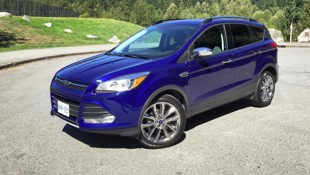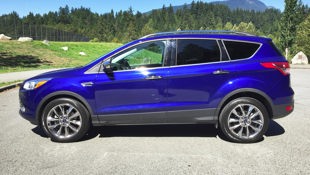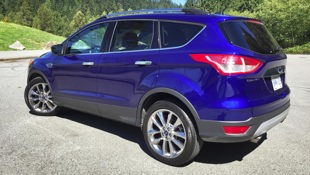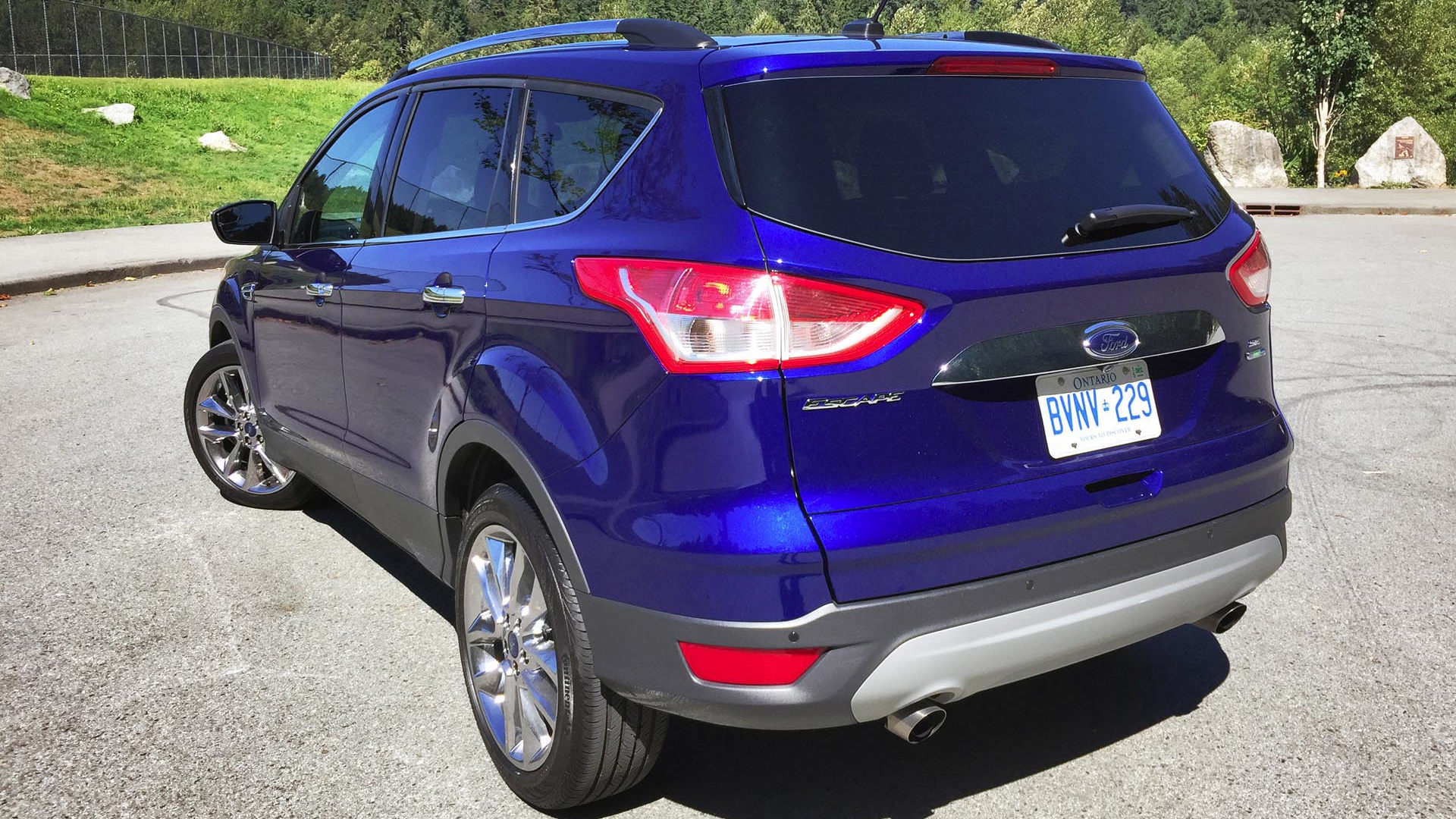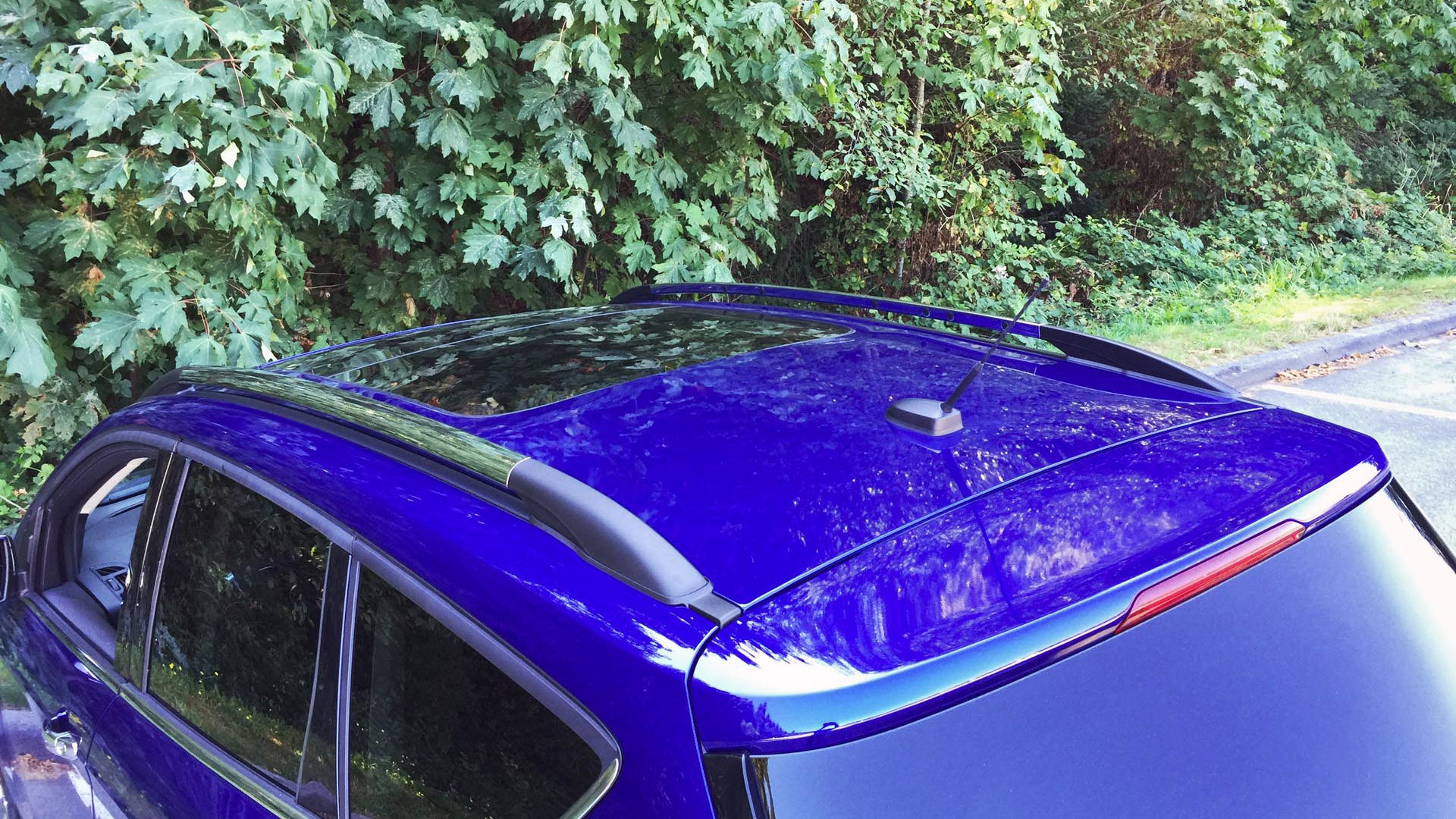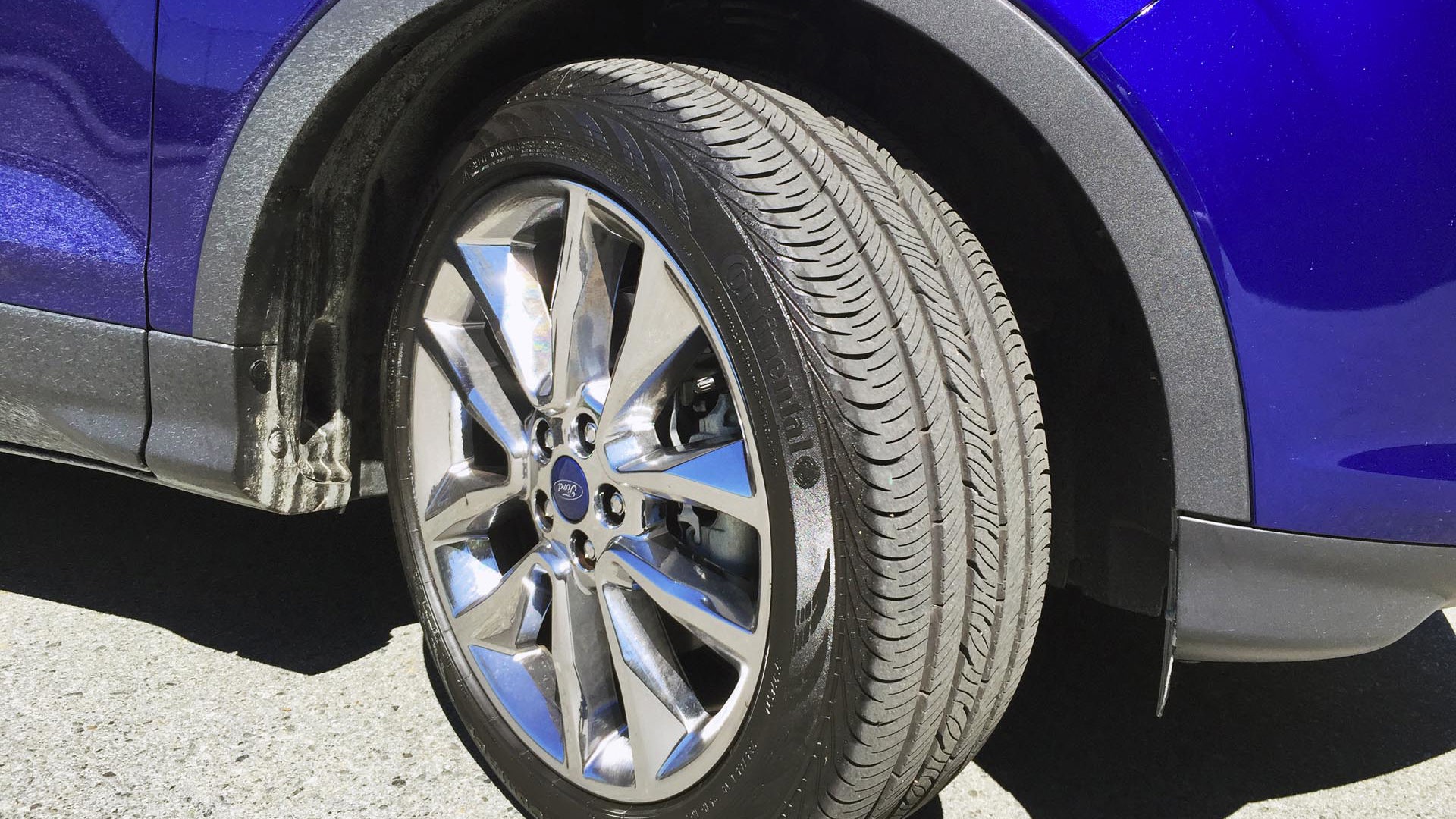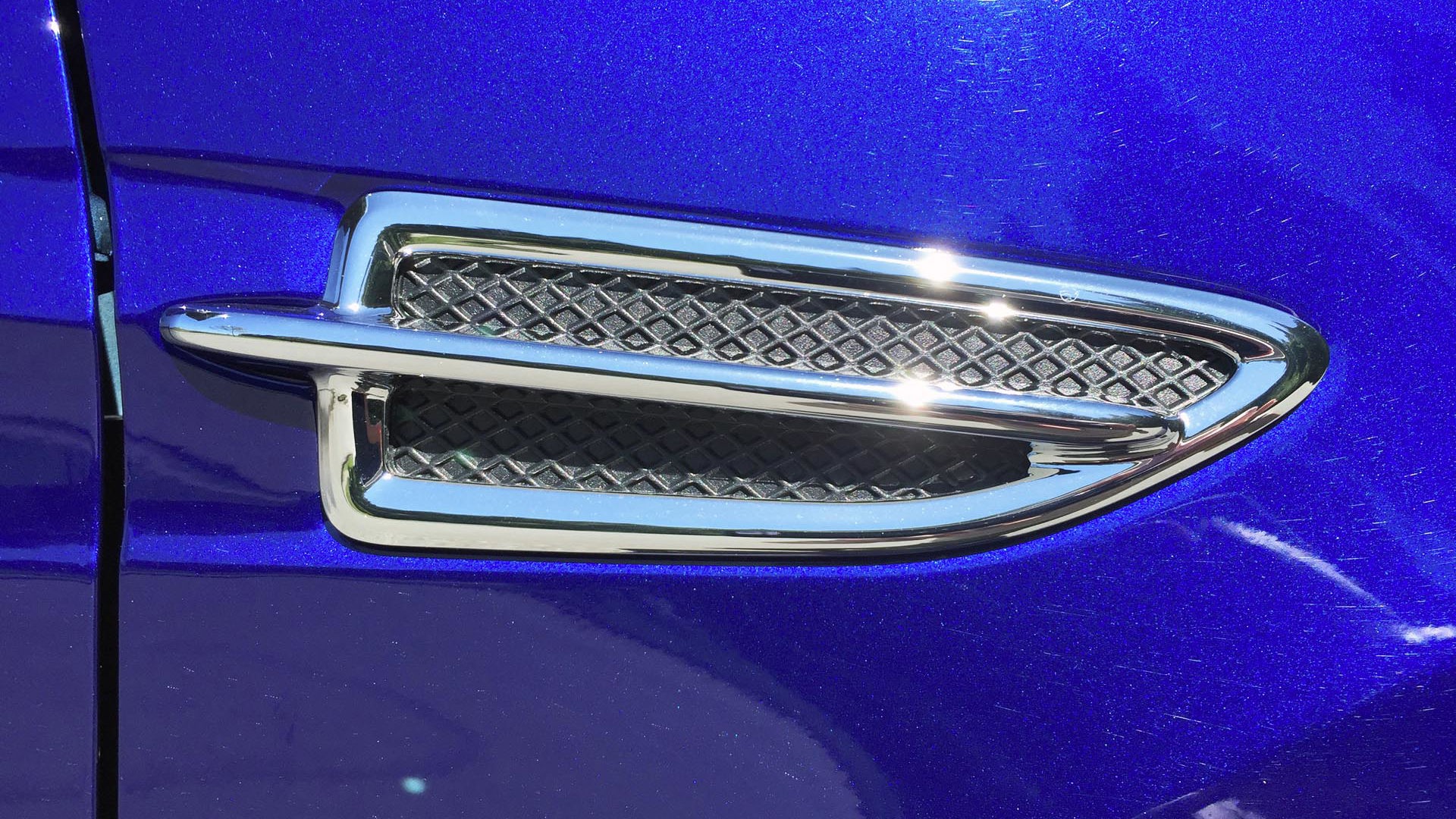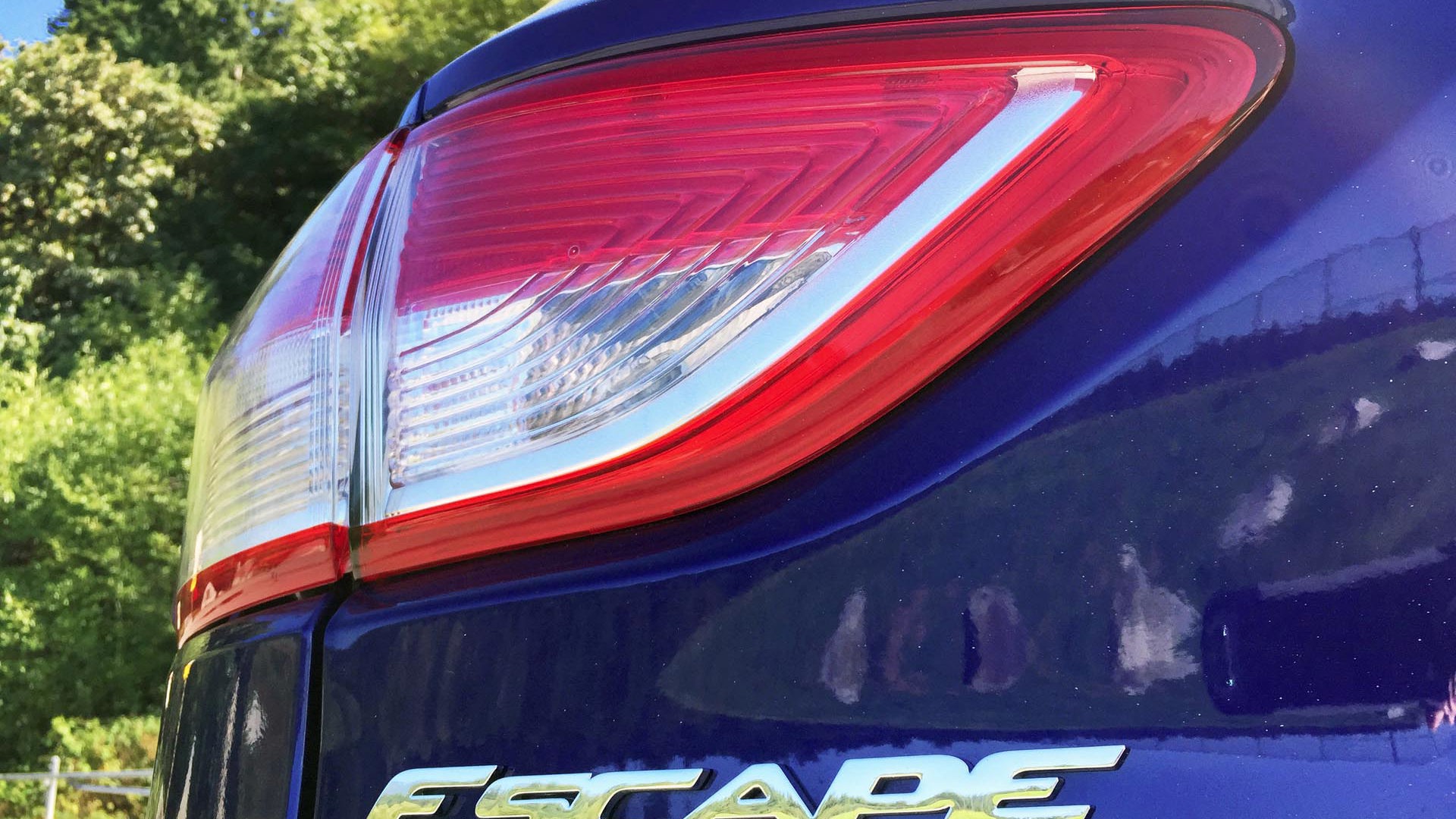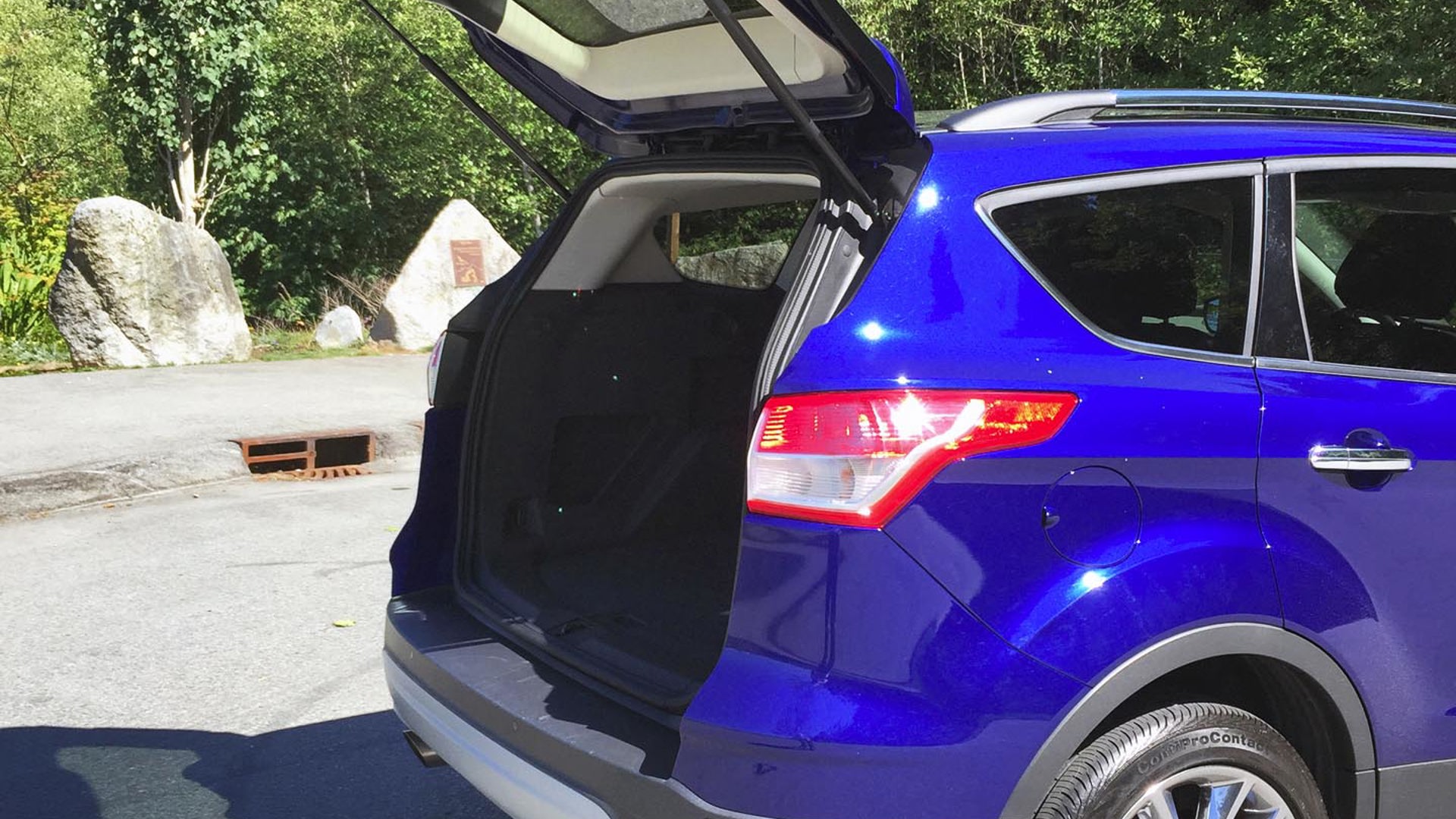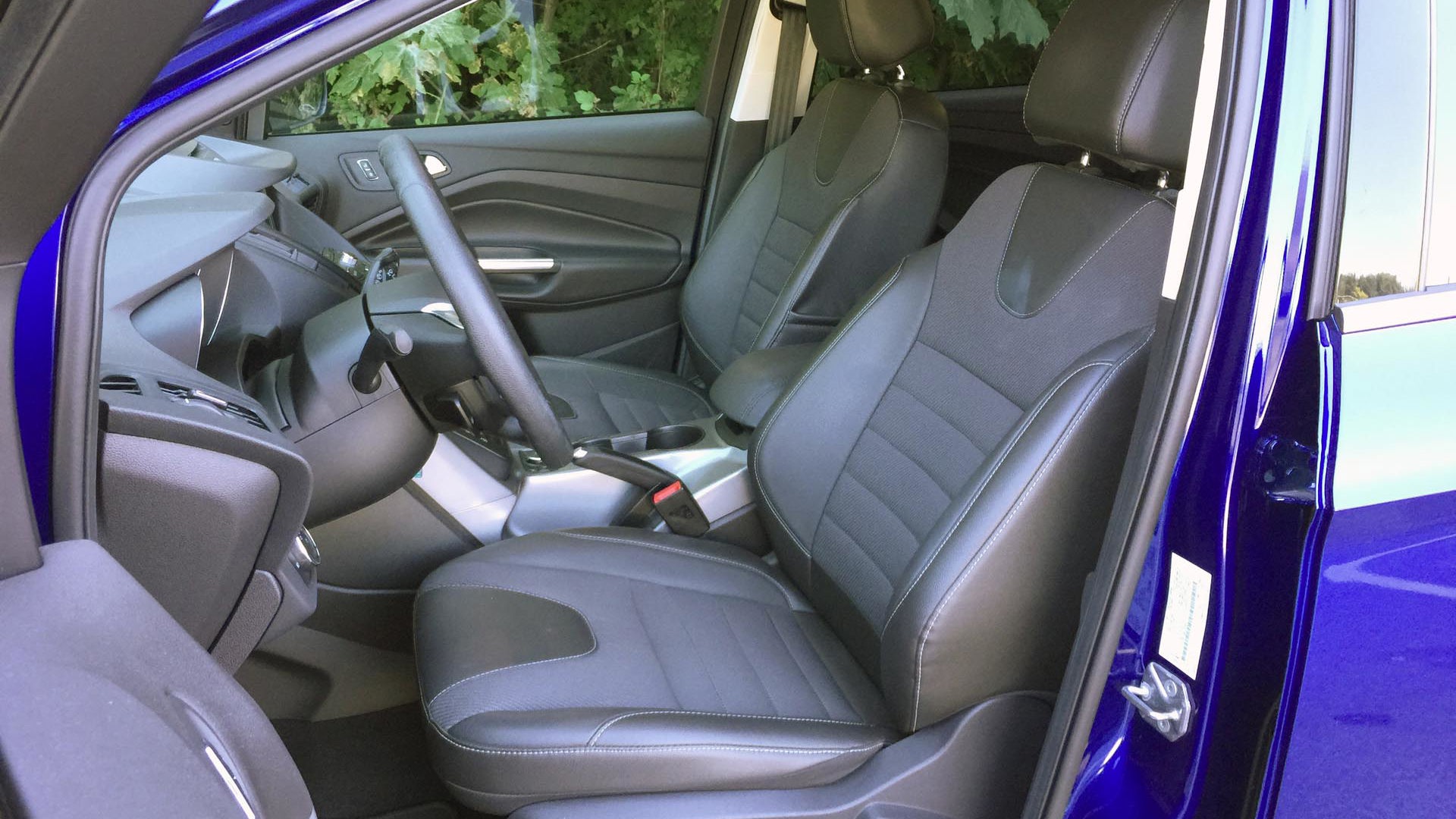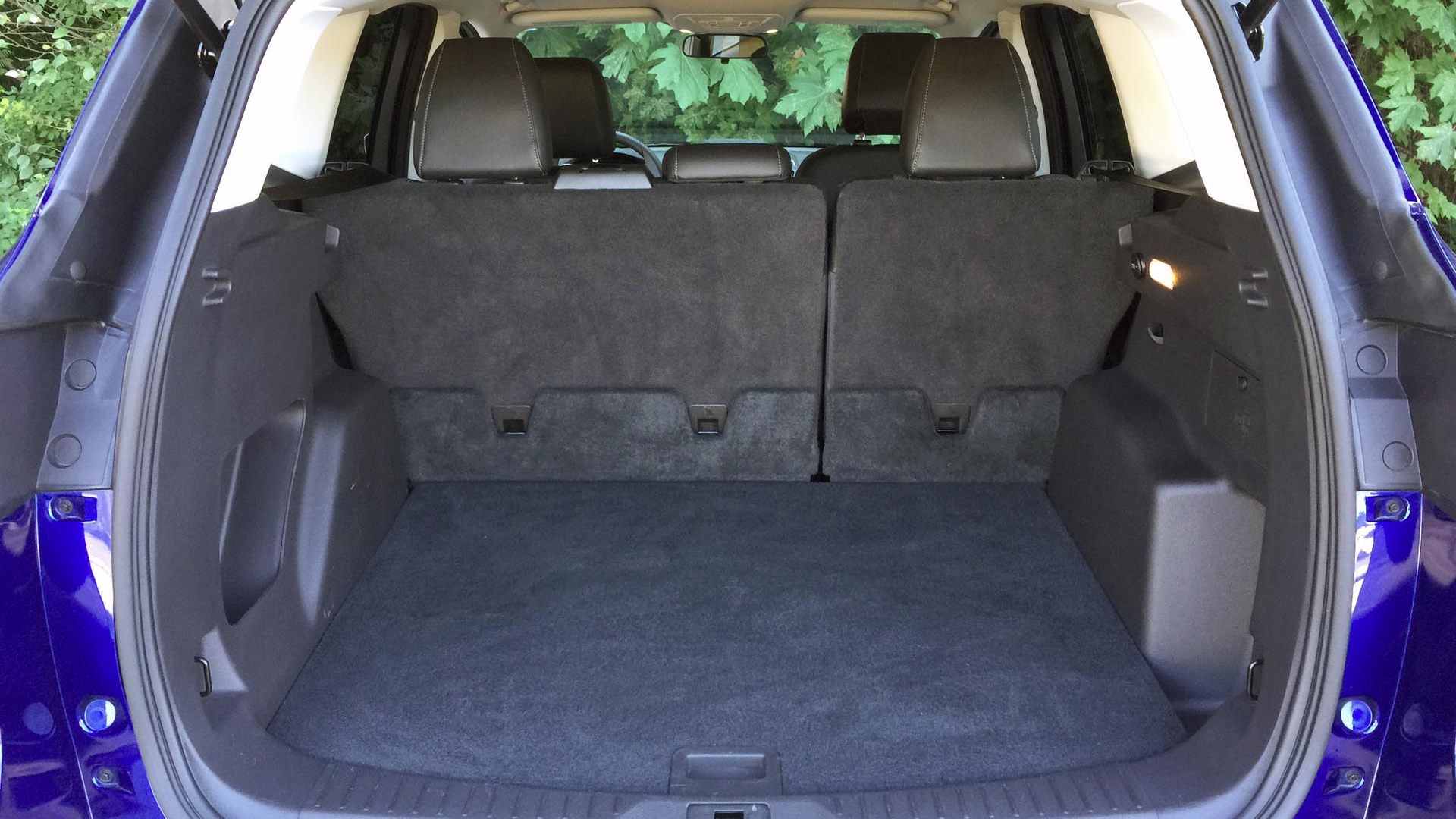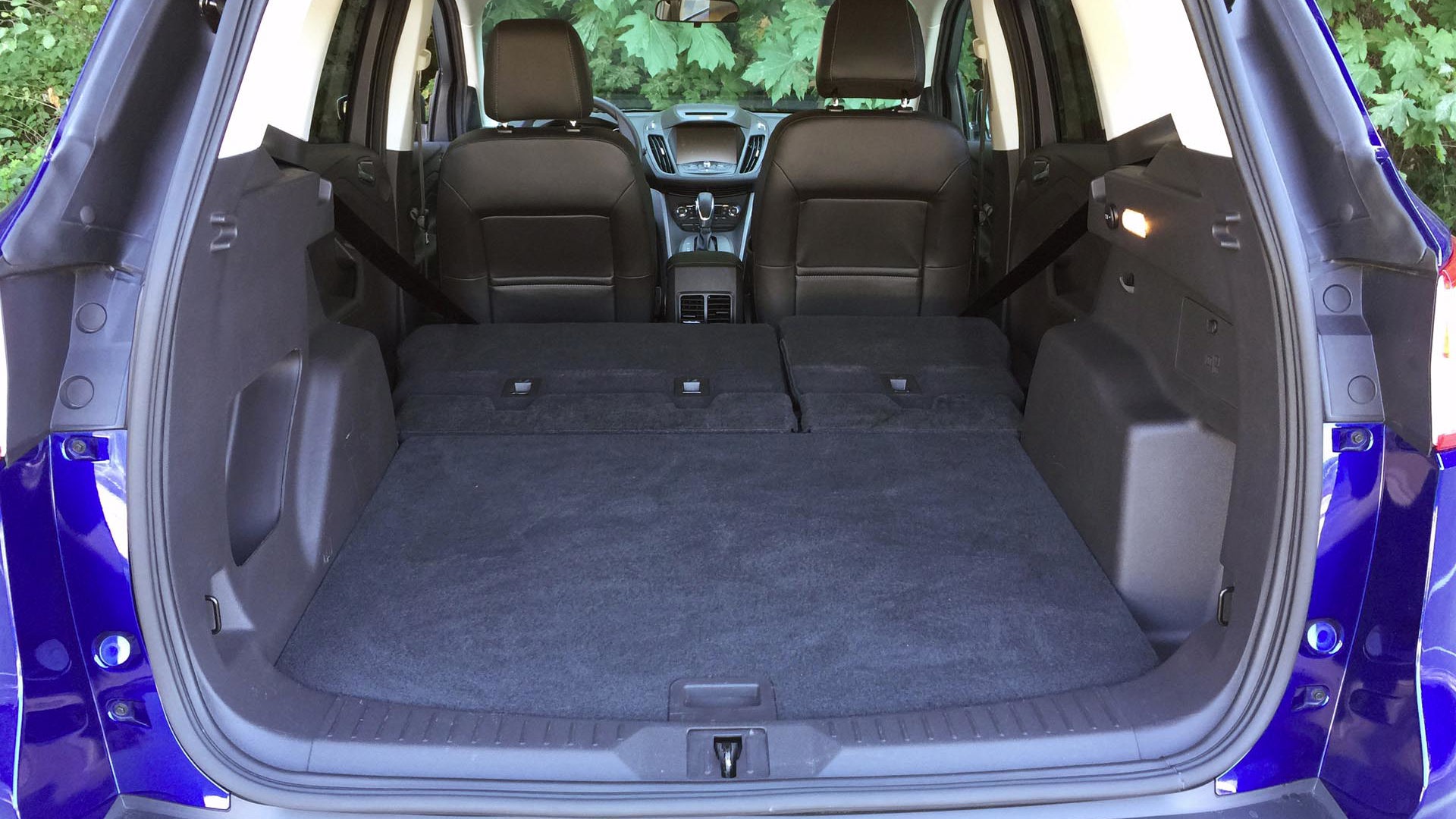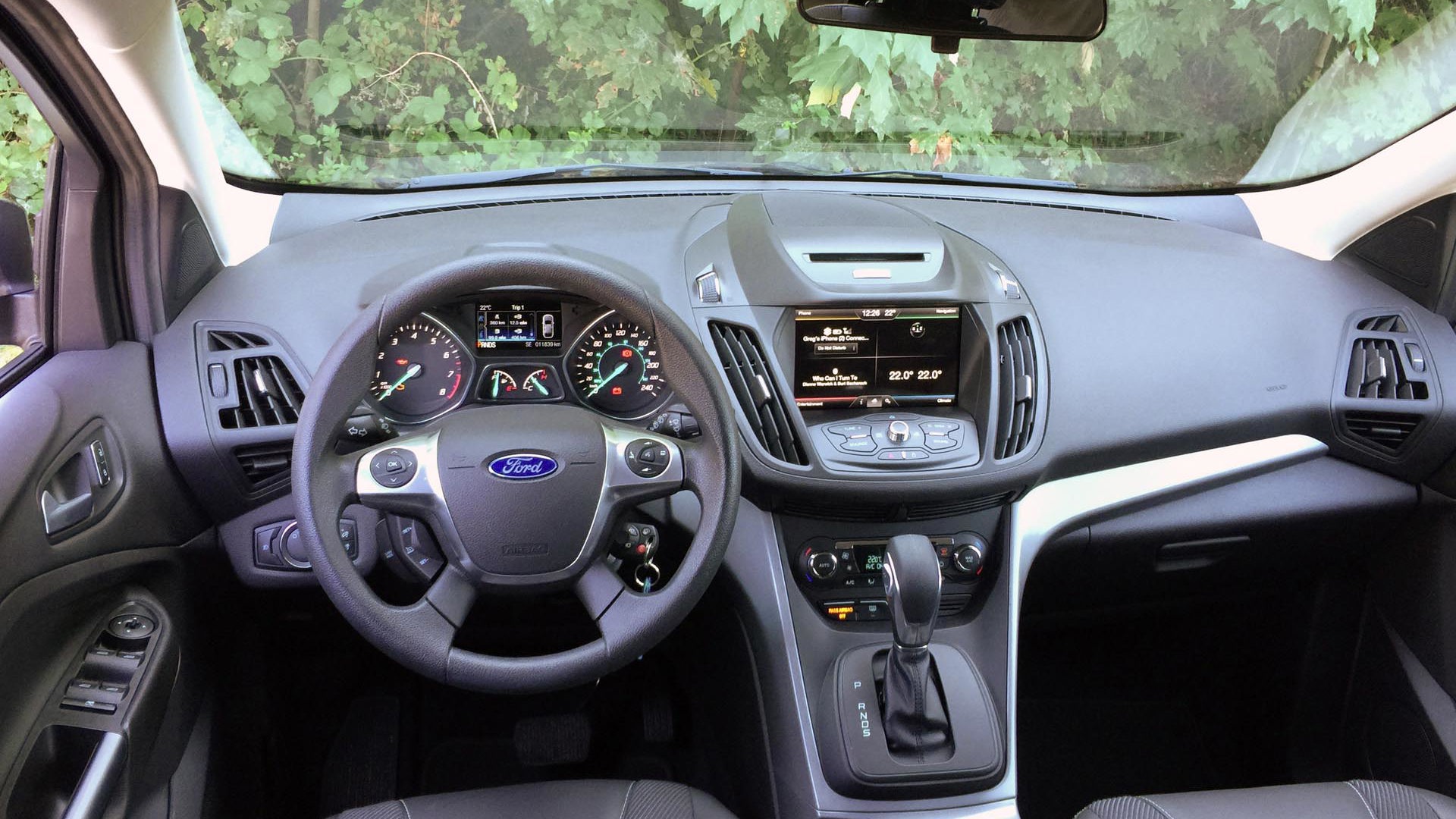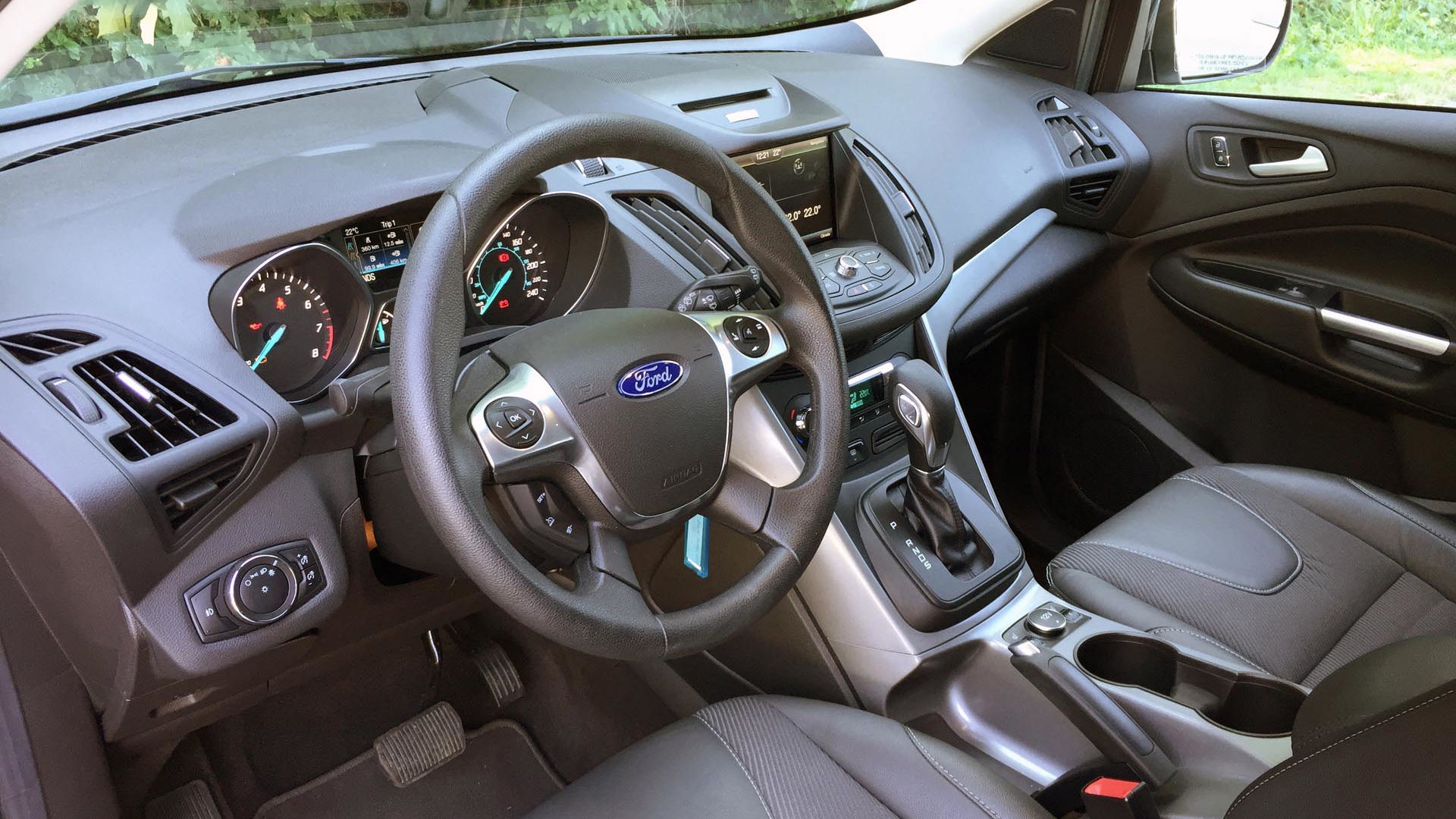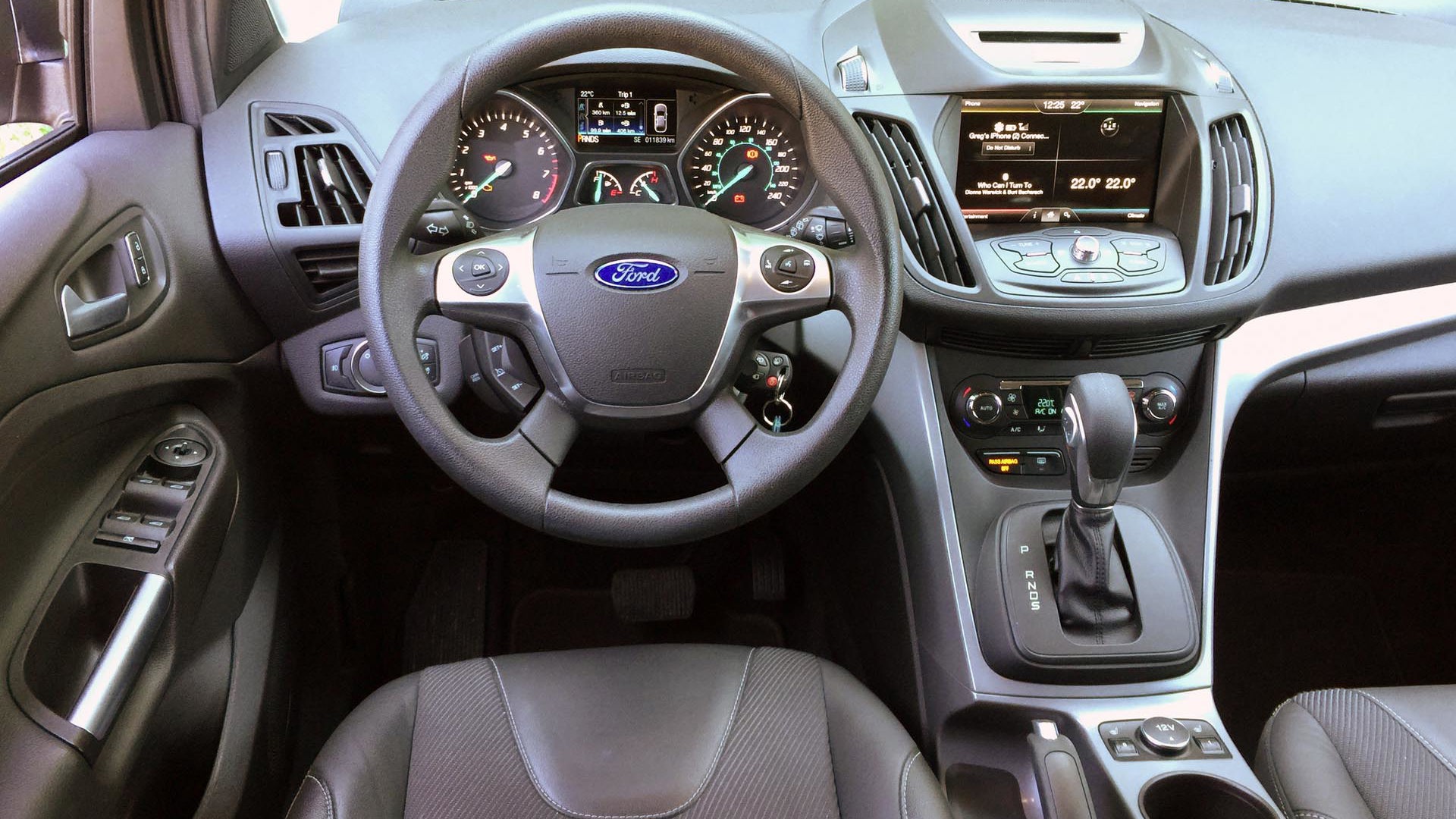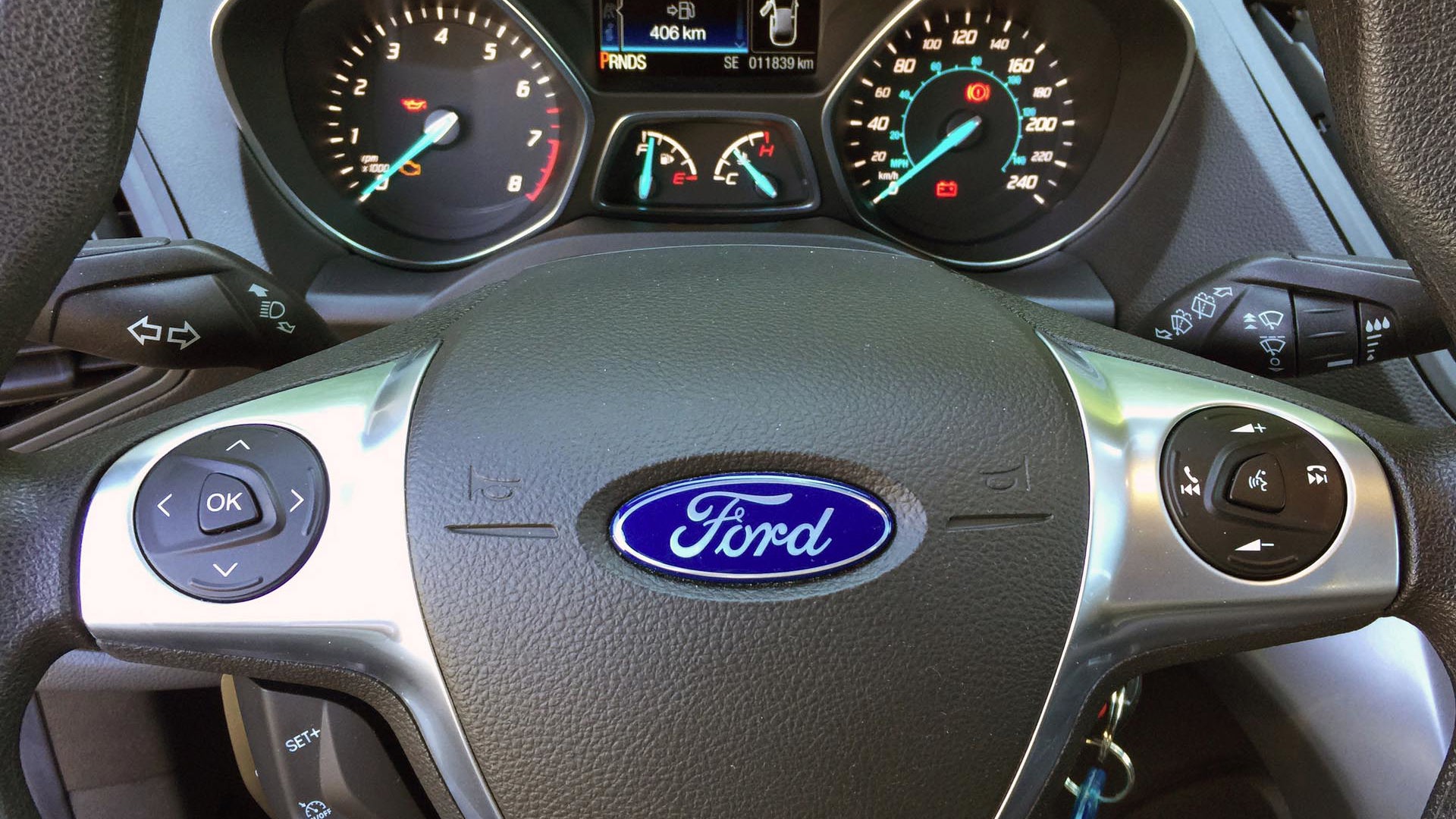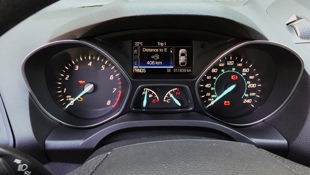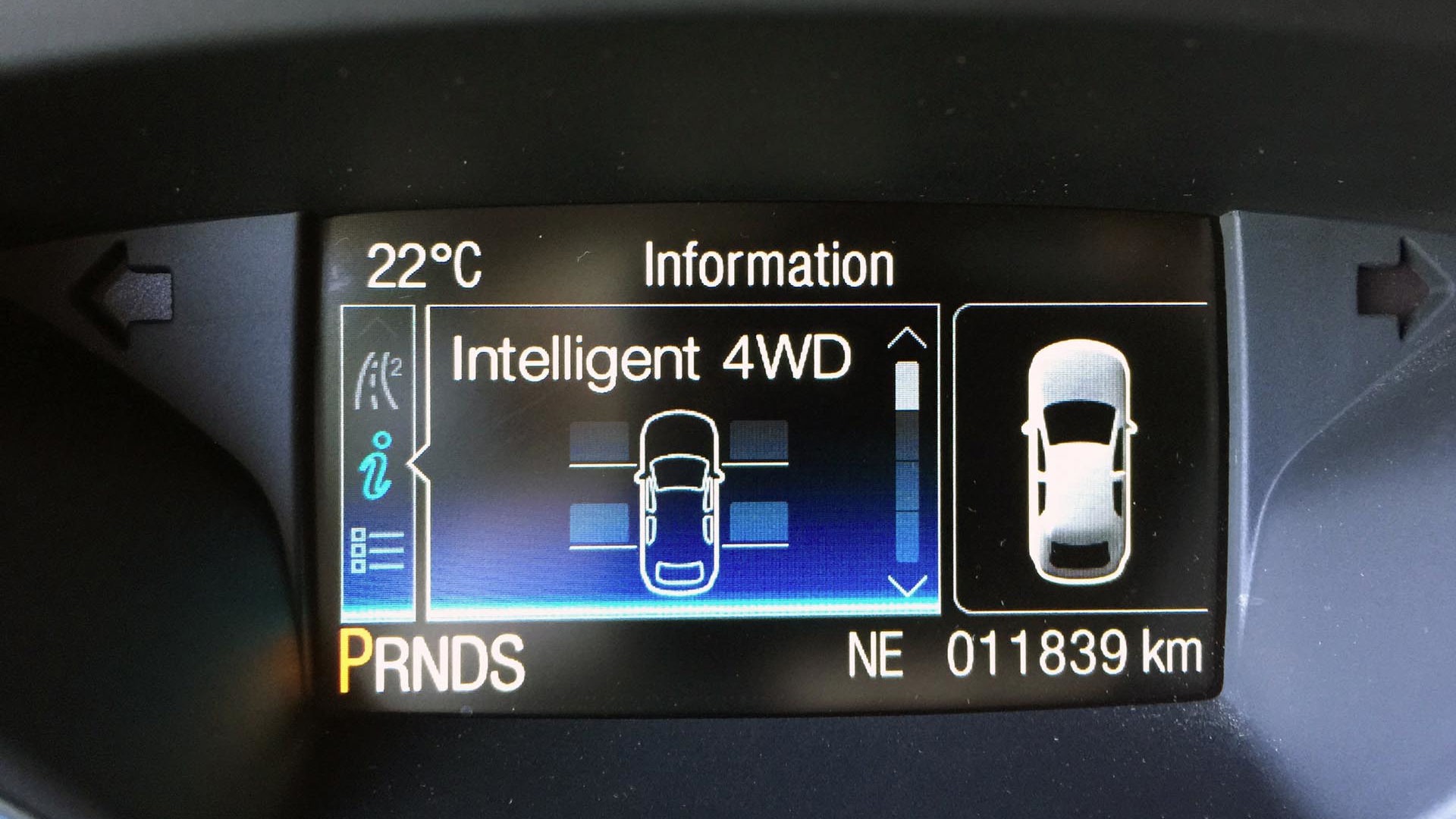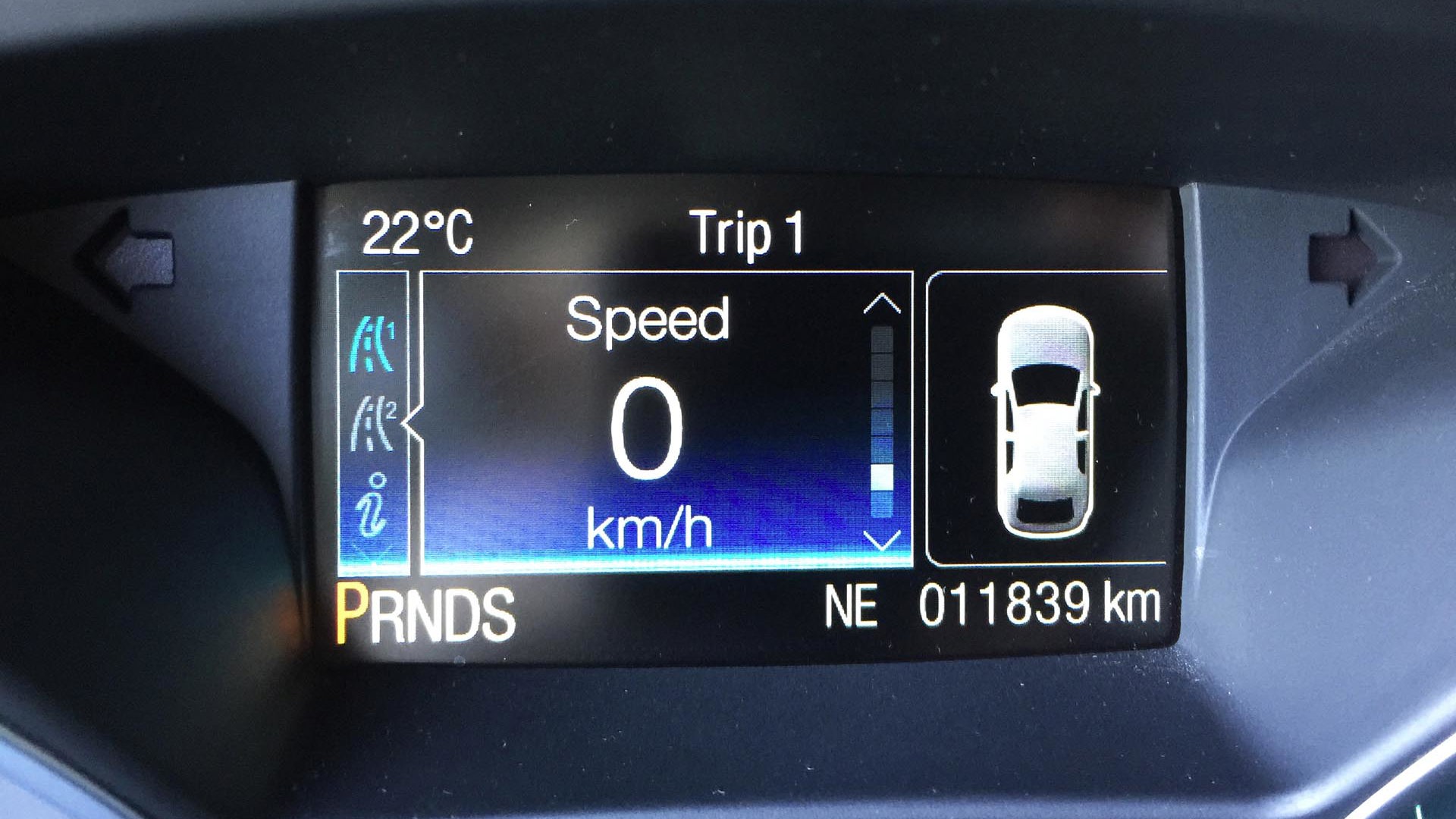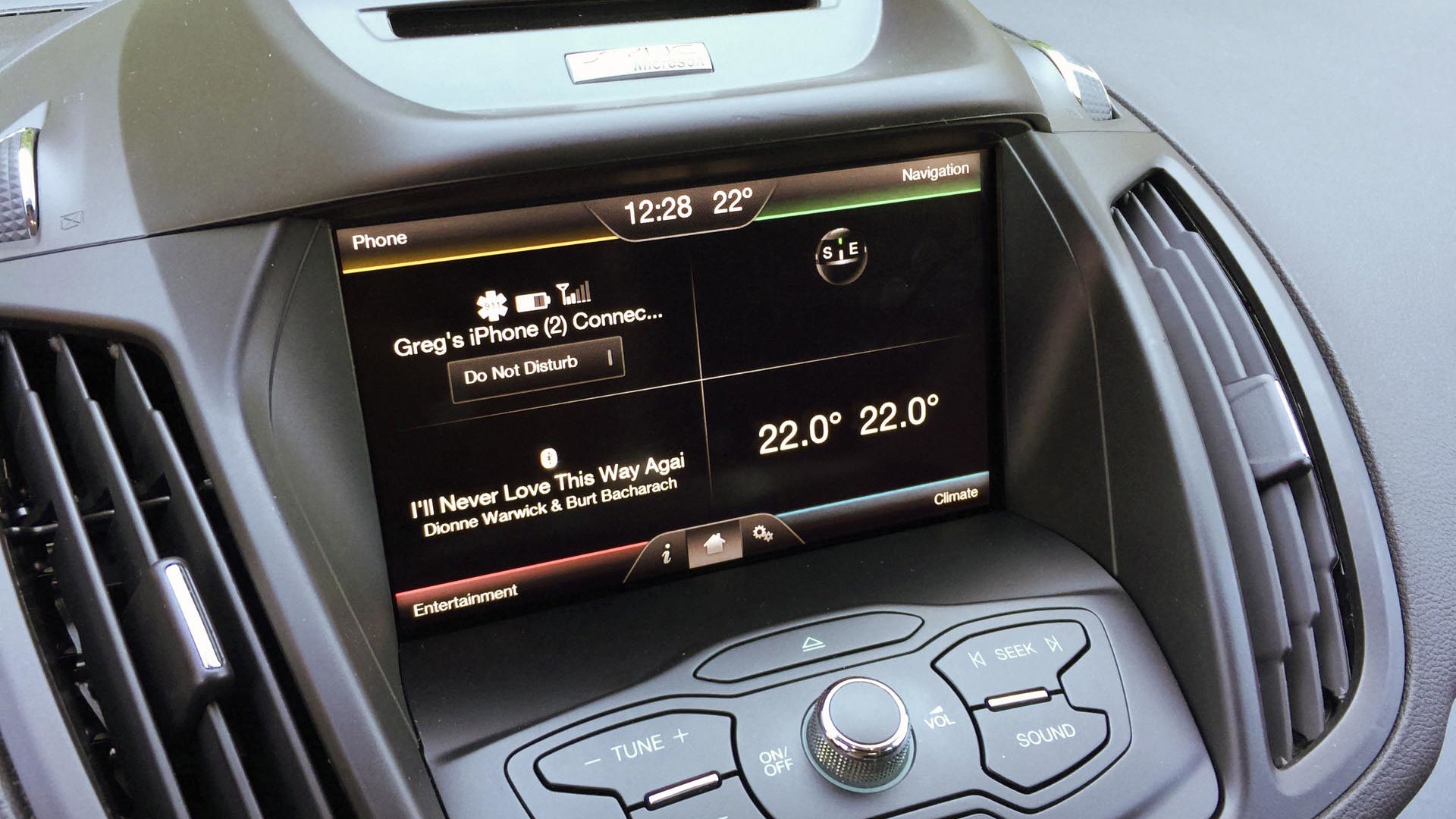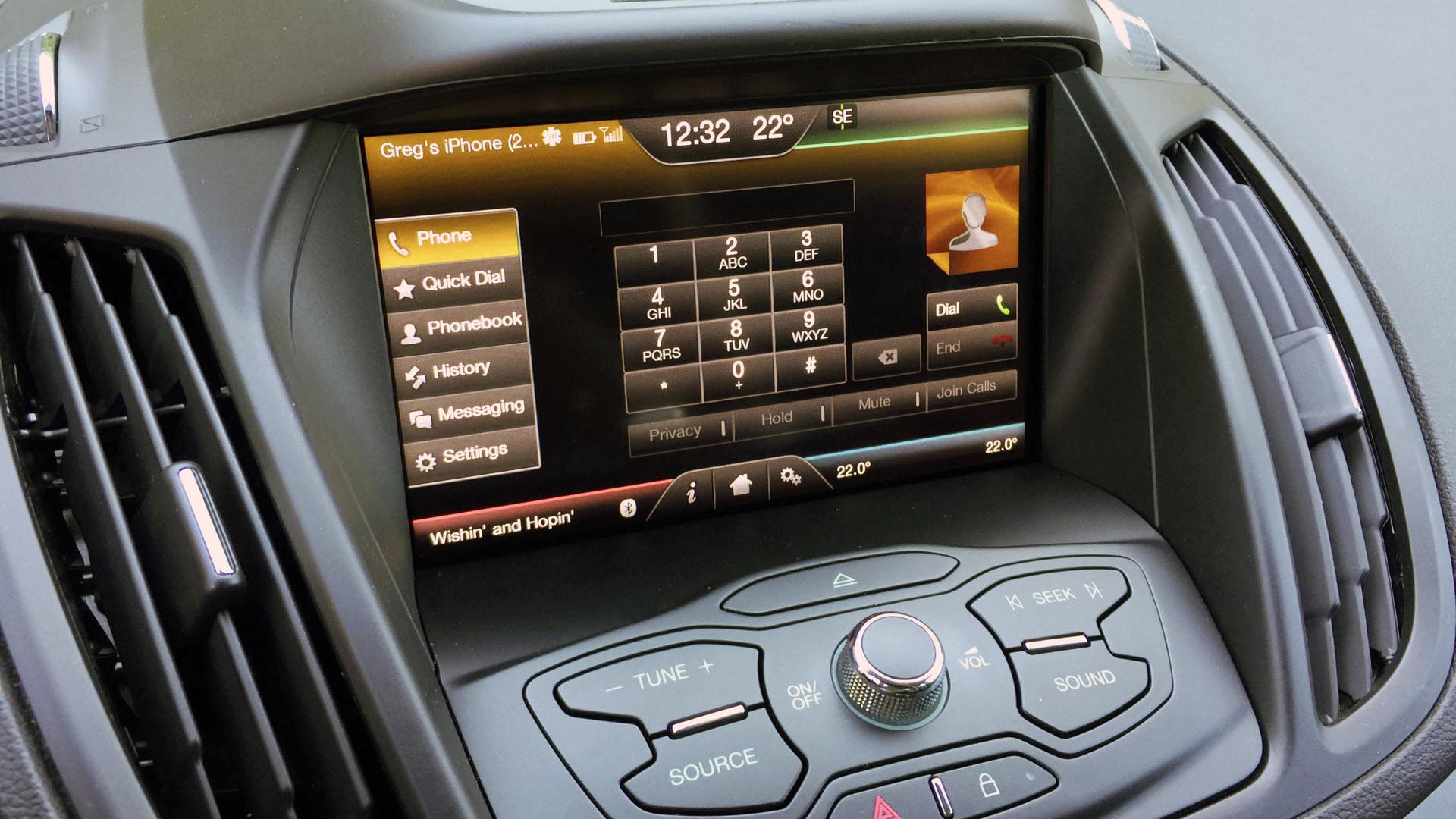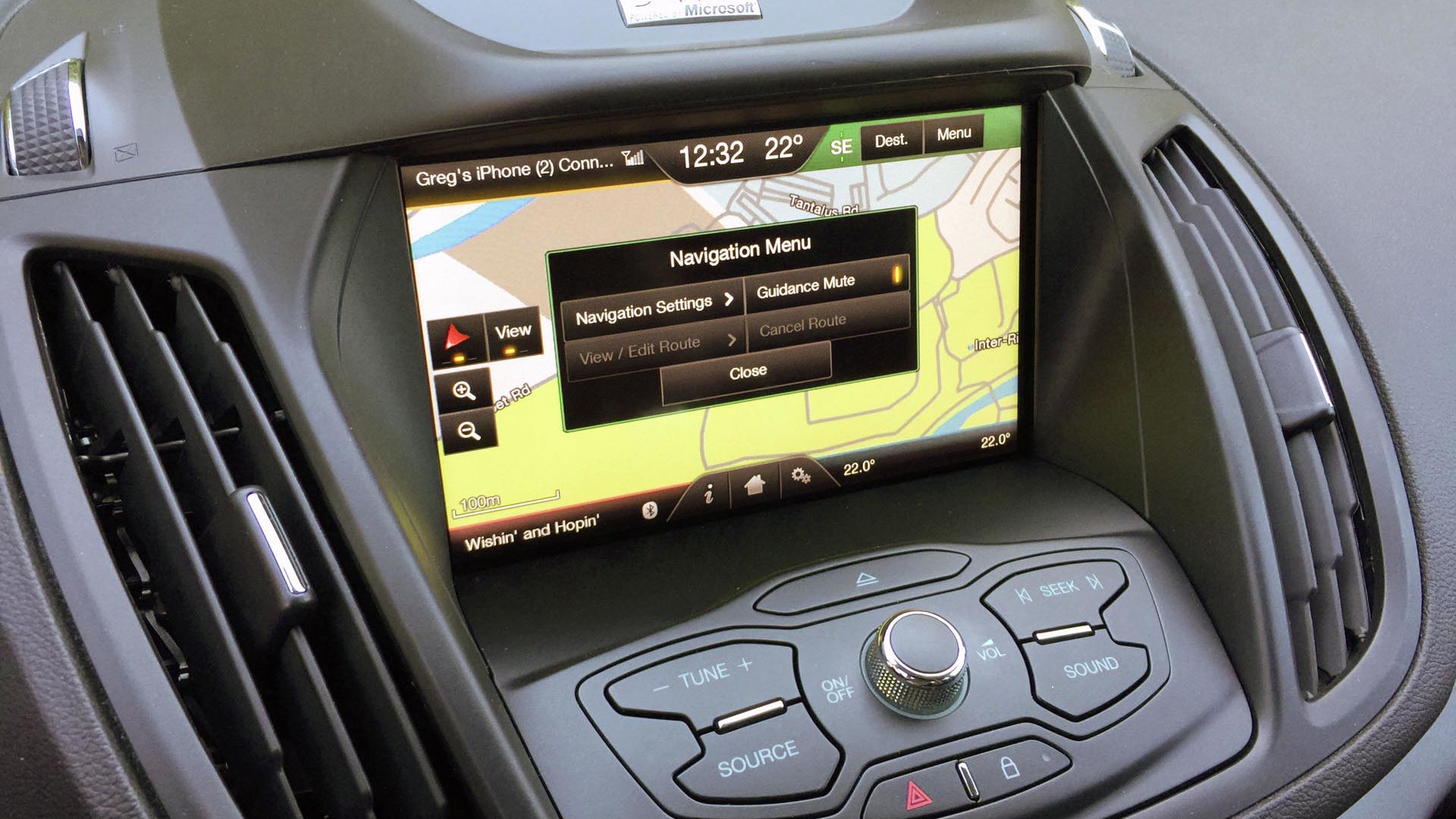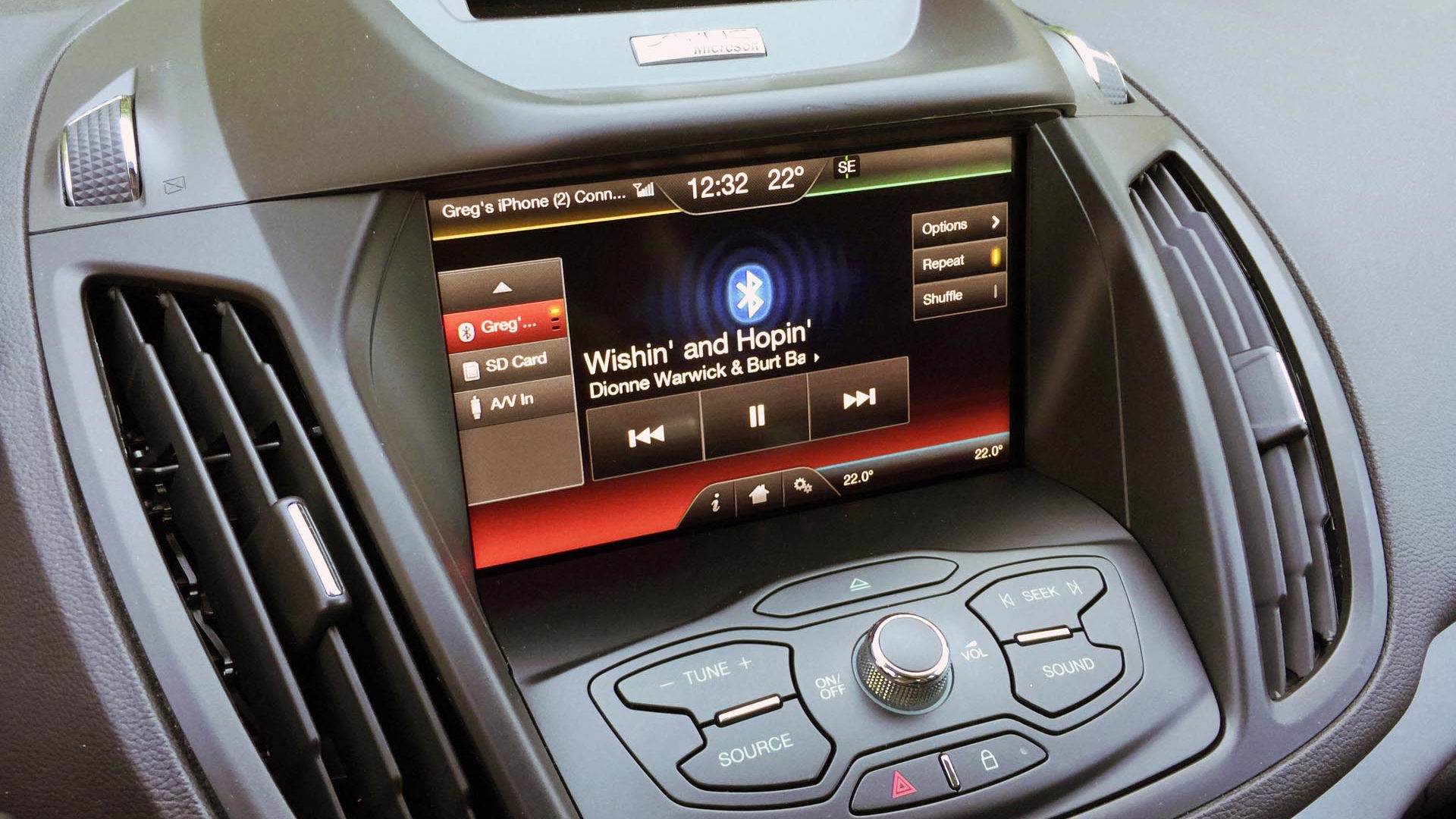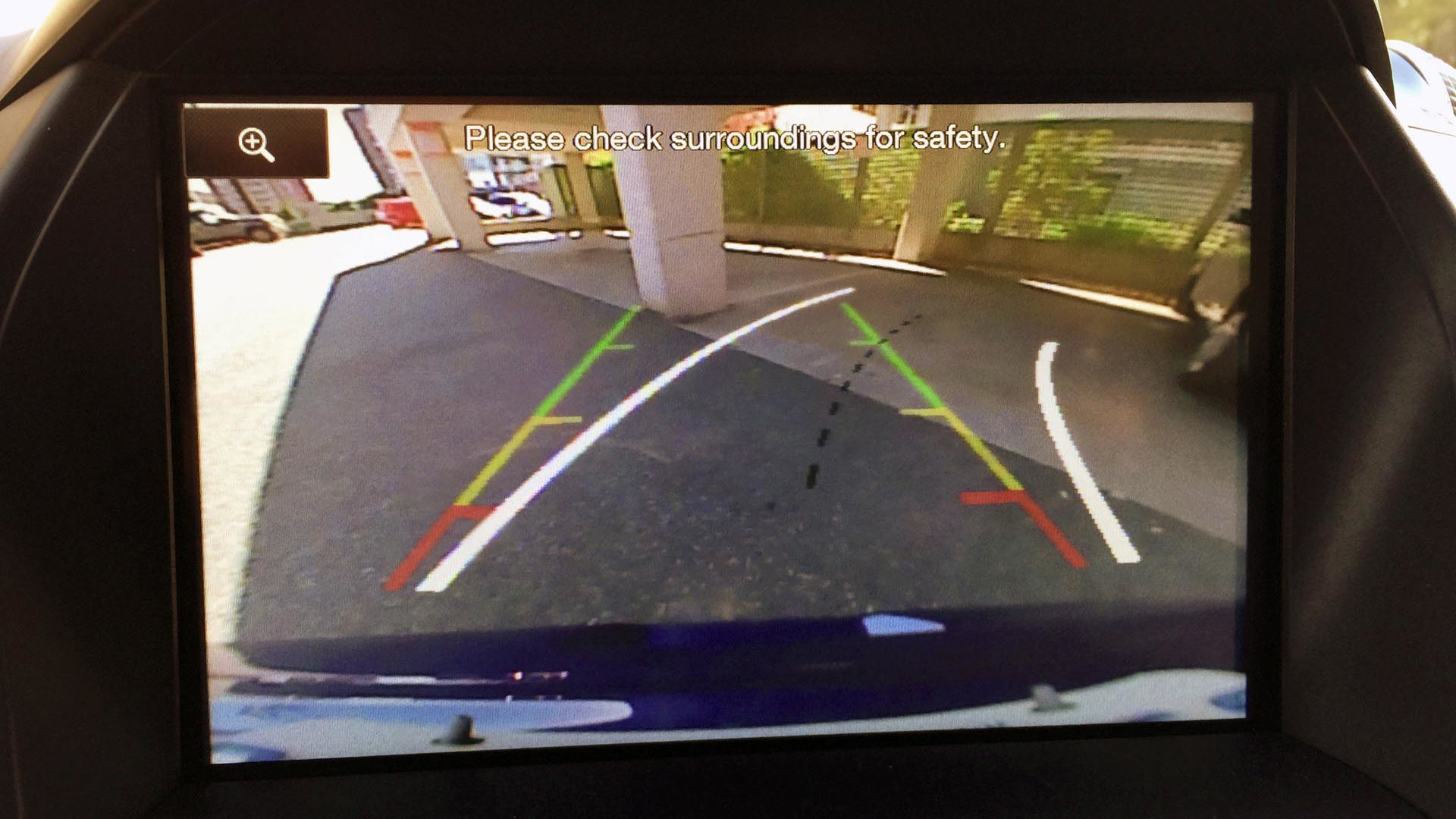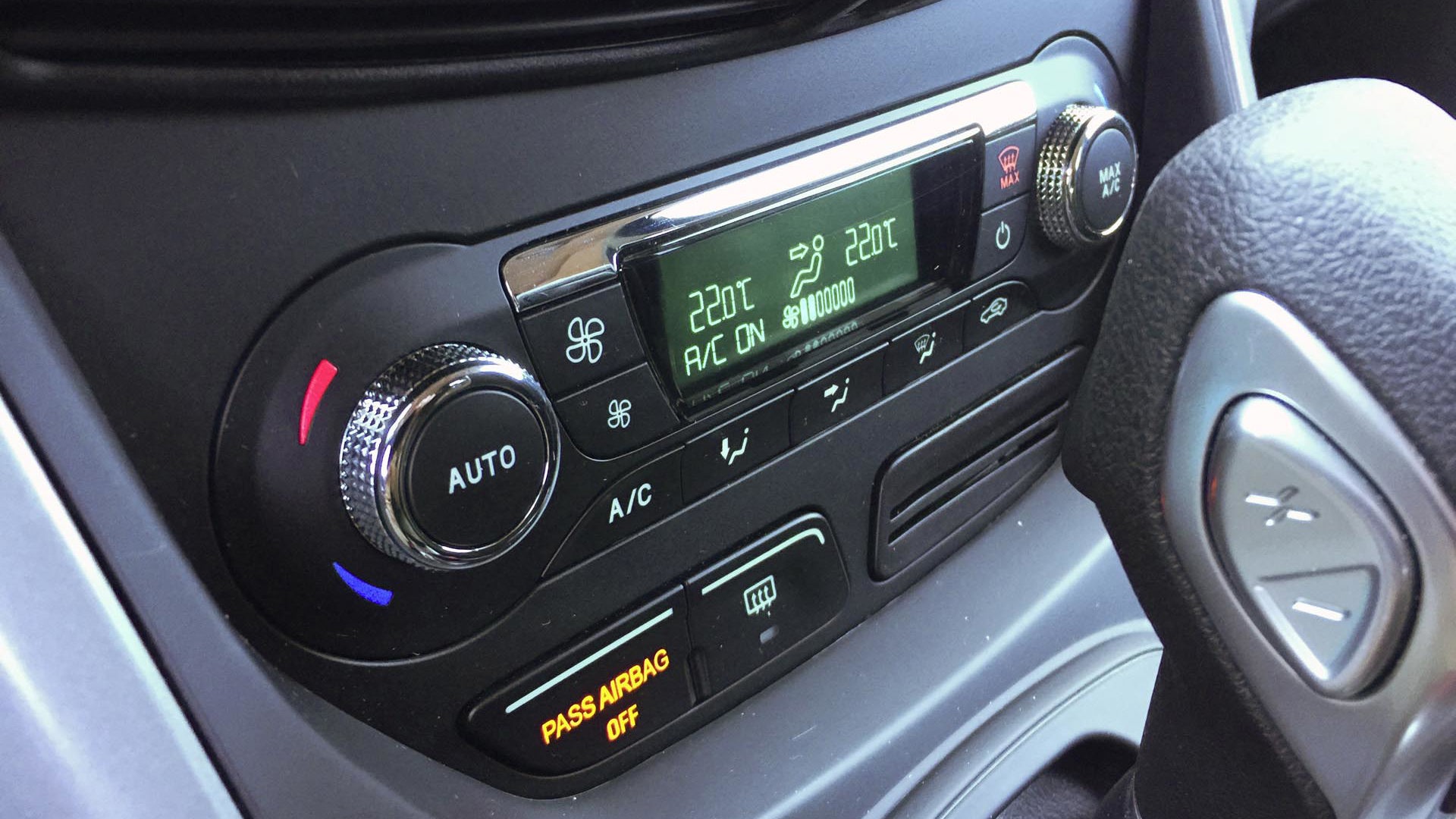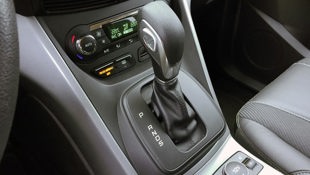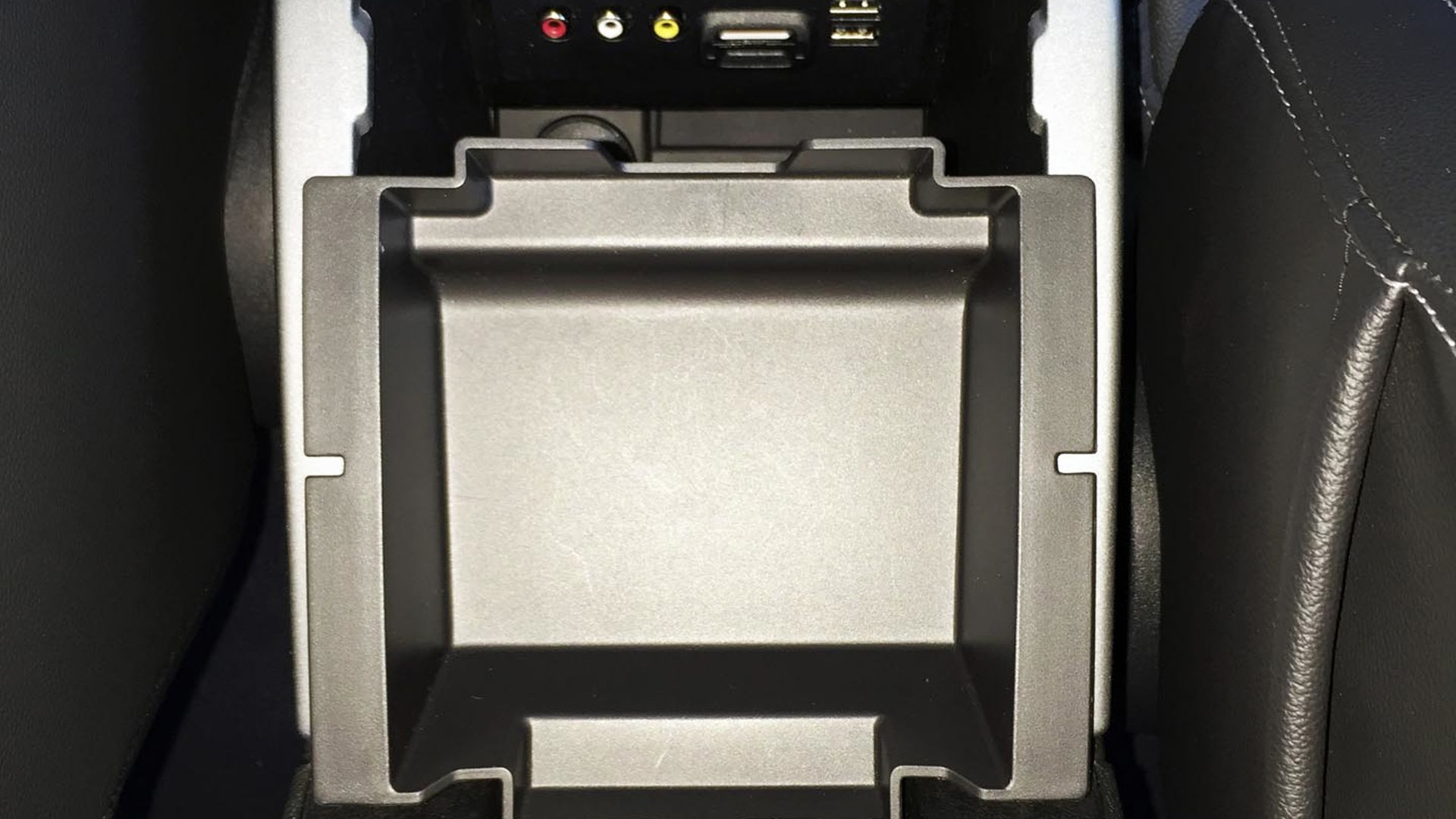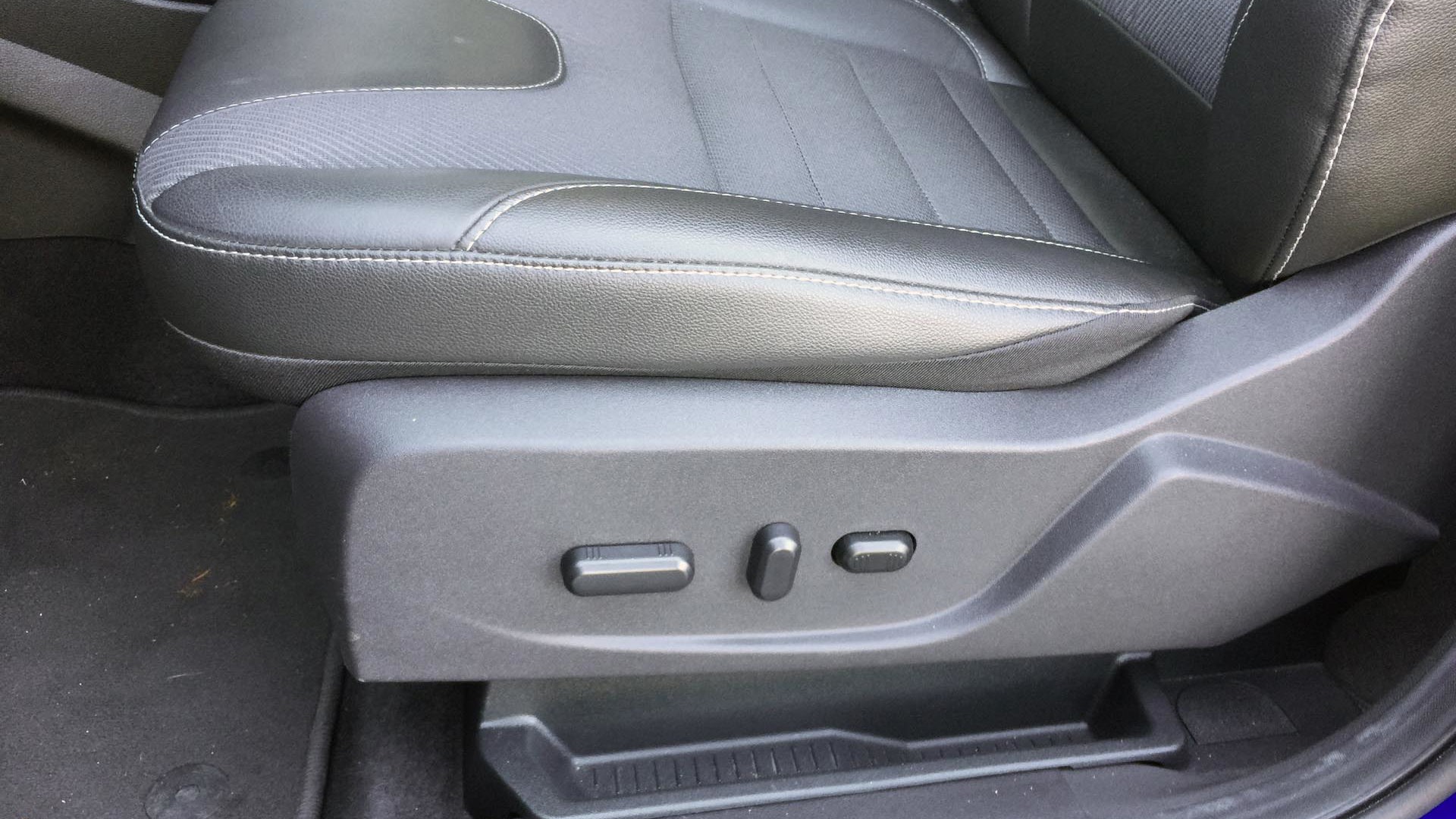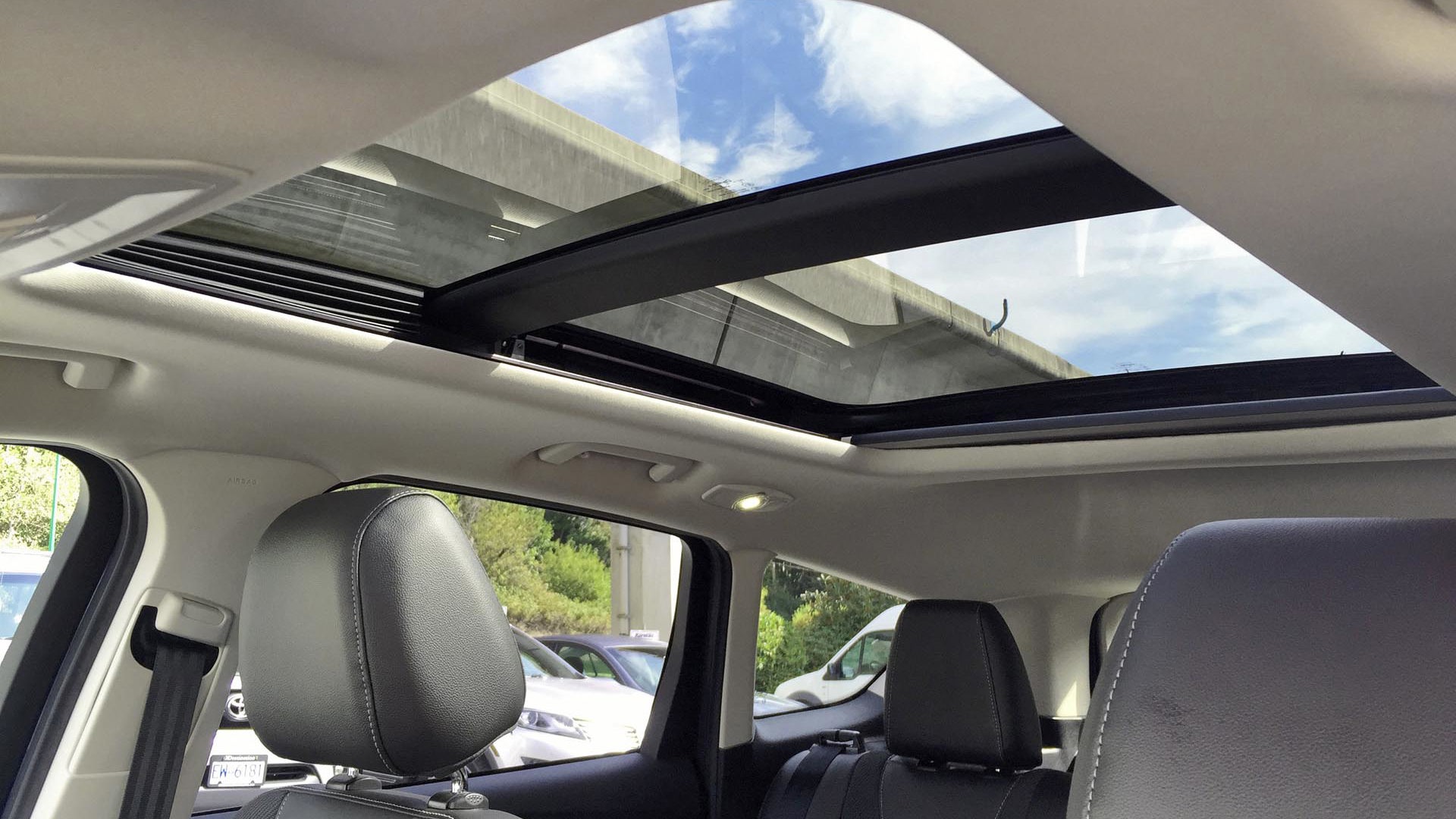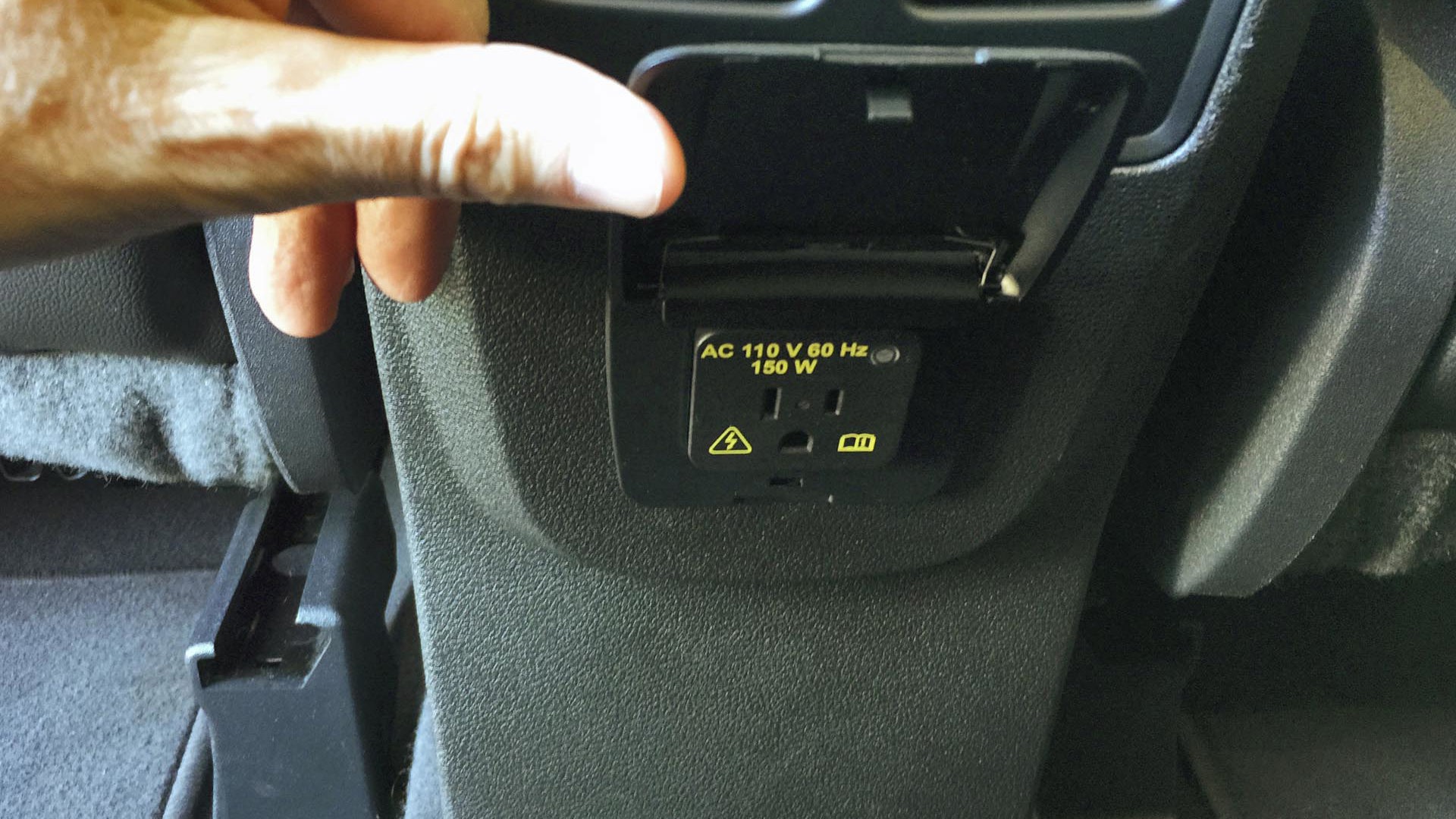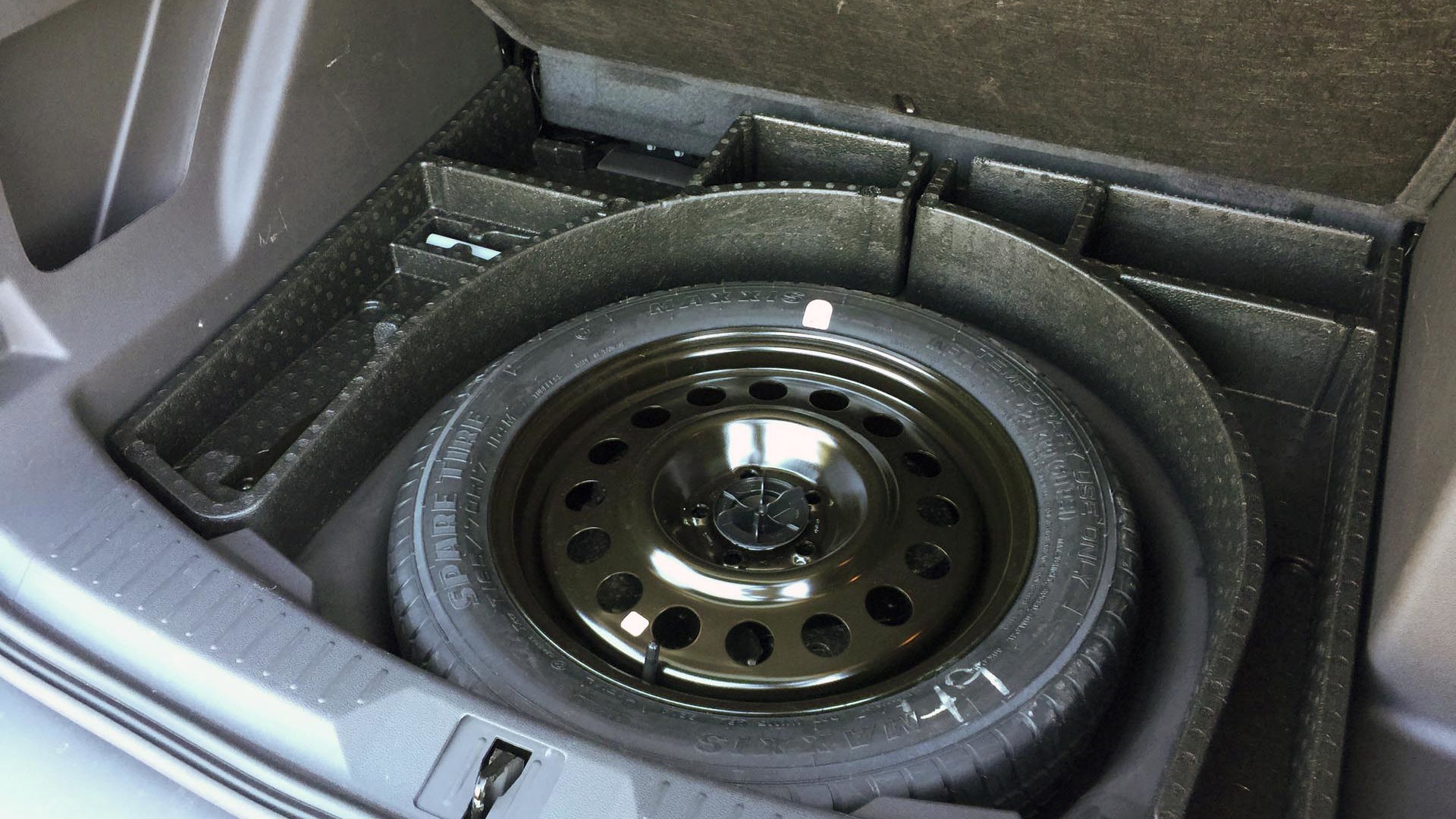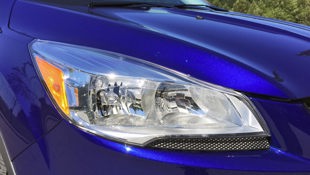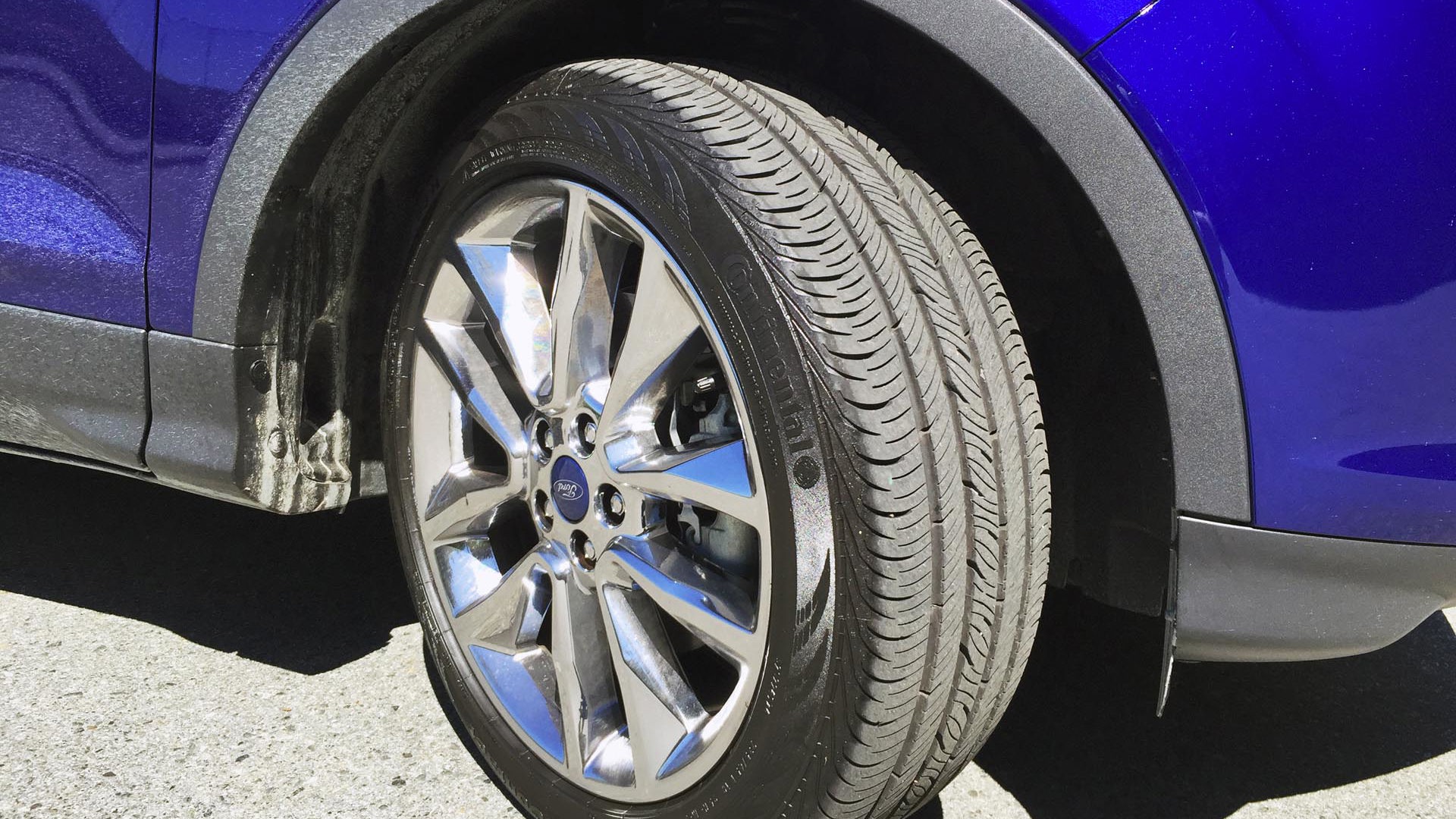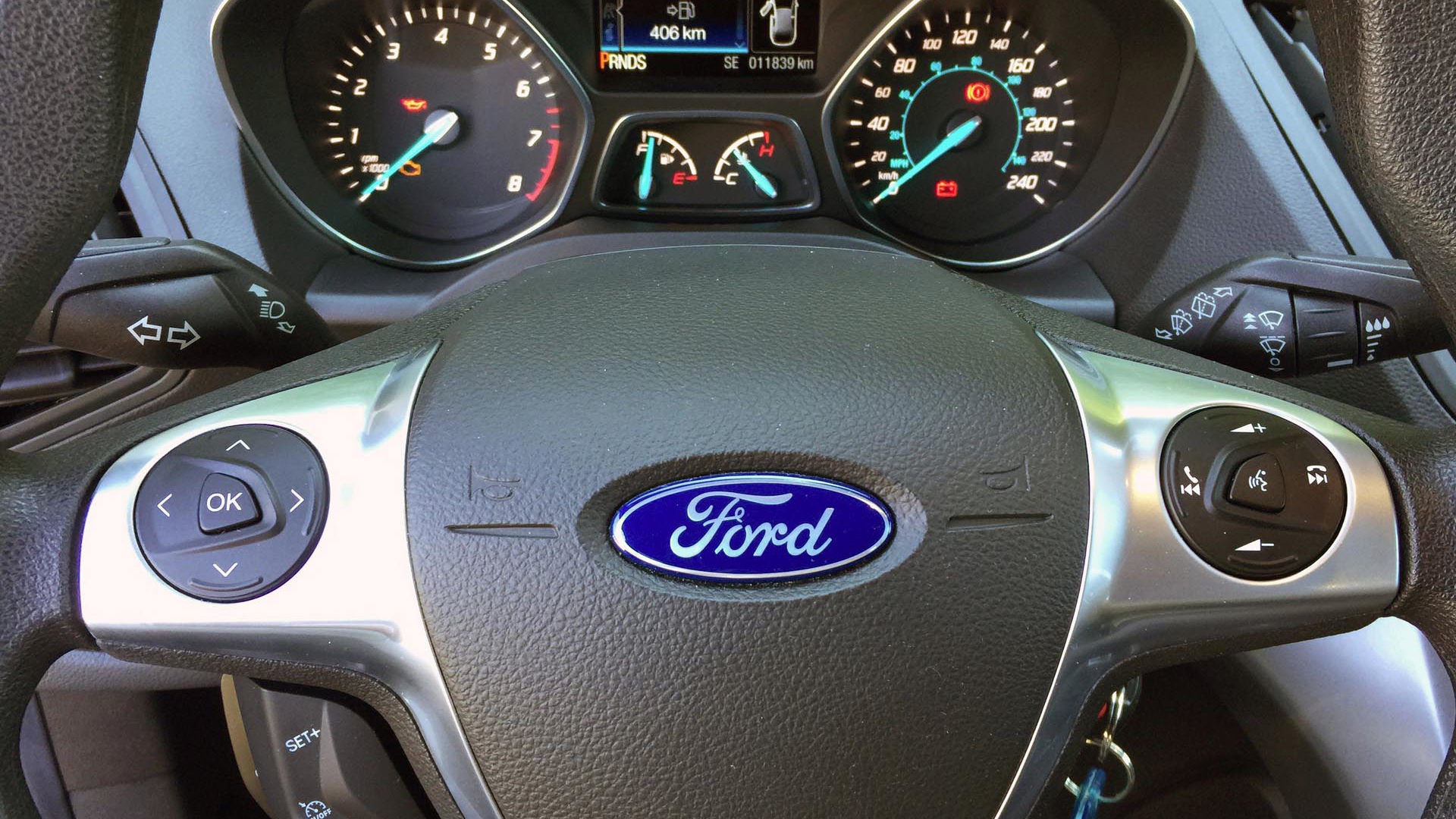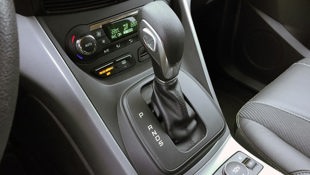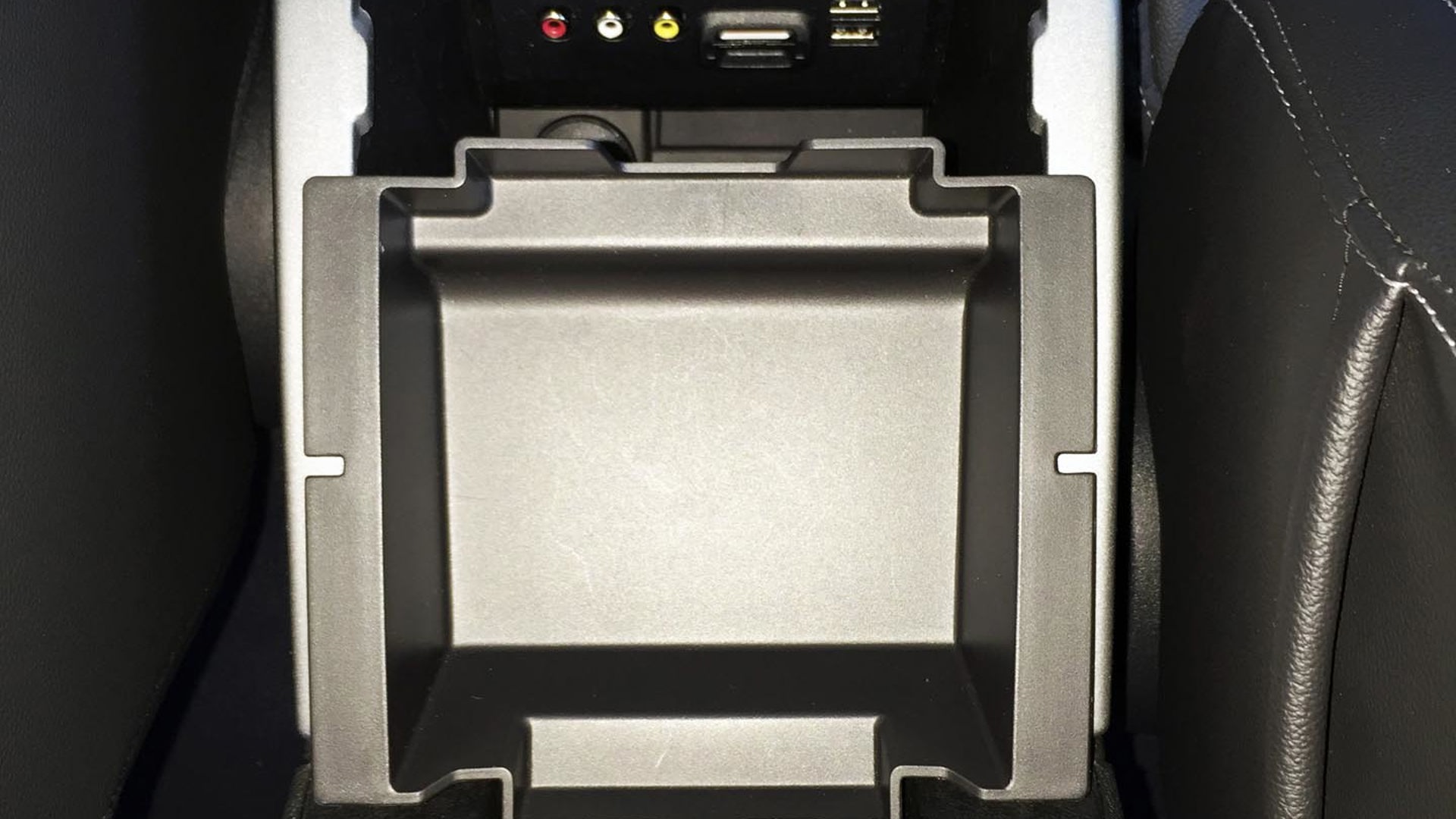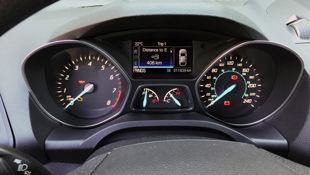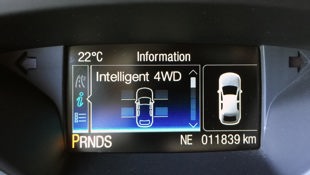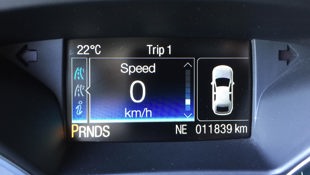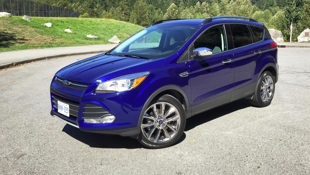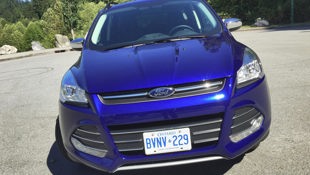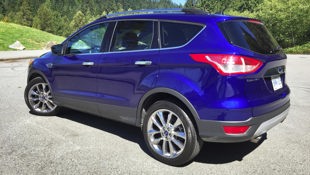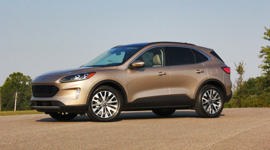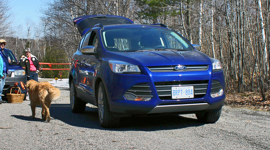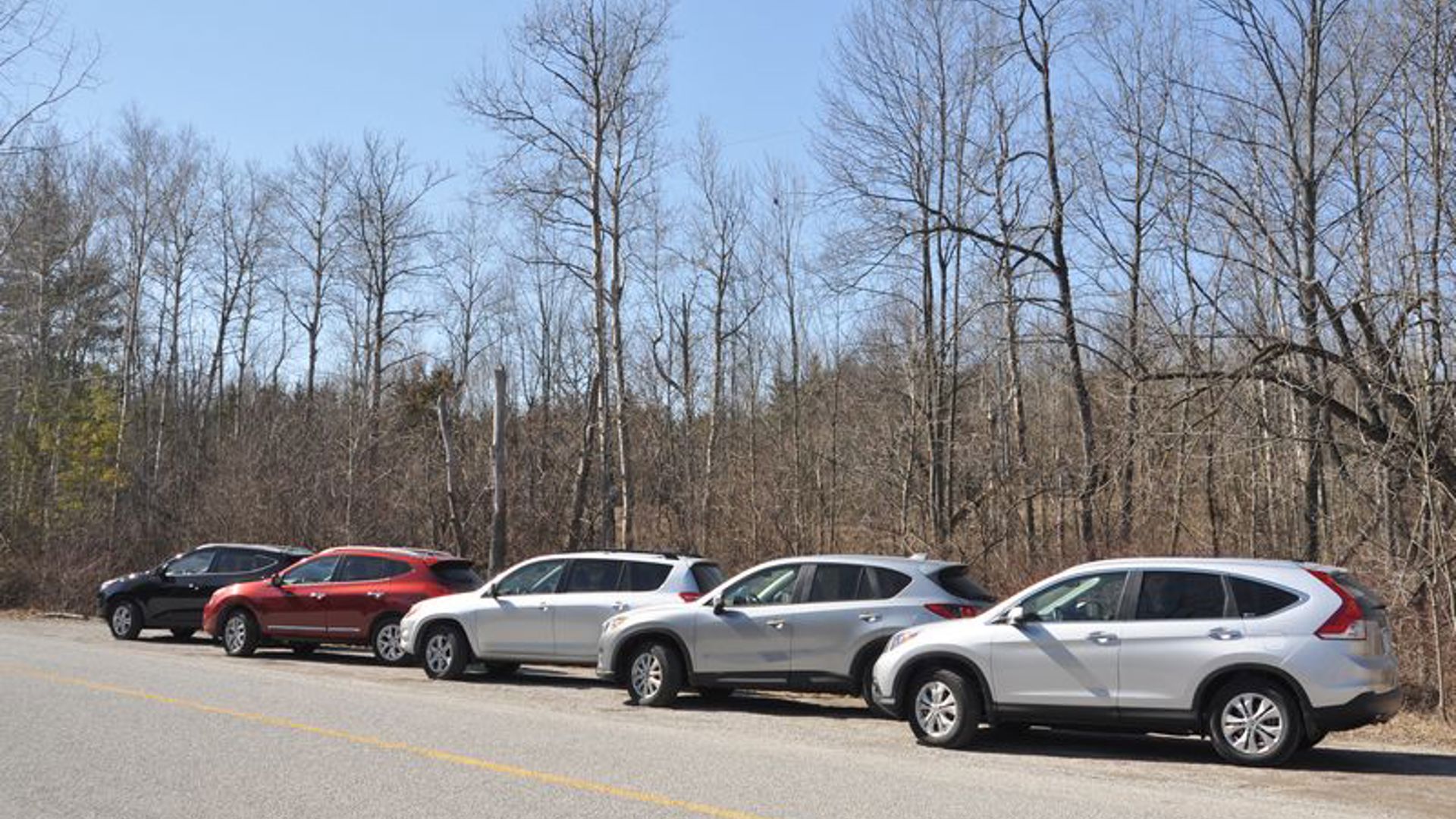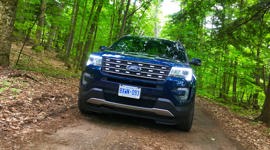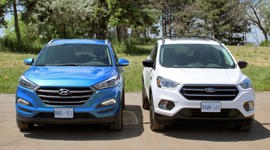 AutoTrader SCORE
AutoTrader SCORE
-
COMFORT7/10
-
PERFORMANCE6/10
-
FUEL ECONOMY6/10
-
INTERIOR7/10
-
EXTERIOR STYLING7/10
The Ford Escape has never earned first place in our comparison tests of compact SUVs, but there’s no doubt it’s the clear favourite amongst consumers. Now in its third model year since a complete redesign, the 2015 Ford Escape remains Canada’s best-selling compact SUV despite a drop in market share and a strong sales surge by the Toyota RAV4 (as of July, 2015).
Now in its third model year since a complete redesign, the 2015 Ford Escape remains Canada’s best-selling compact SUV
The Escape certainly ticks all the right boxes for consumers: it’s the right size for Canadian families: small enough to be maneuverable in traffic yet with a roomy cabin and spacious cargo area. A choice of three available four-cylinder engines allows Escape owners to choose the blend of performance and fuel economy they want. And with optional all-wheel drive and a decent 200-mm ground clearance (along with a good set of winter tires) it provides competent all-weather, all-season capability.
Adding to its appeal are contemporary, edgy styling, a wide range of comfort and safety features and some unique features such as active parallel parking assist and a rear liftgate that opens by swinging your foot under the bumper.
Not to be overlooked are the hundreds of Ford dealers across the country, where it can be purchased and serviced, along with the generous rebates and low interest financing that you’ll often find with Ford vehicles.
2015 and 2016 Ford Escapes are available in three trim levels, S, SE and Titanium with standard front-wheel drive or optional all-wheel drive. A choice of three engines is available, depending on the trim level: base Escape S FWD models come with a 2.5L four-cylinder engine but Escape S 4WD models get the turbocharged 1.6L four-cylinder Ecoboost engine. Mid-level Escape SE FWD models come standard with the 2.5L engine but can be optioned to the 1.6L Ecoboost or the 2.0L Ecoboost engines. Escape SE 4WD models can be had with the 1.6L or 2.0L Ecoboost engines. Finally, top-of-the-line Escape Titanium FWD and 4WD models both come standard with the 2.0L Ecoboost engine.
Our tester is a mid-level Escape SE 4WD with a 2015 MSRP of $28,199. Options boosted its price to $33,499 plus $1,650 Freight and PDI for a total of $35,149 before taxes. A quick check of Ford’s website revealed that 2016 Ford Escapes are already being offered with incentives so it’s quite likely you’ll find even bigger discounts on remaining 2015s. At the time of this writing, Ford is advertising low interest financing for 84 months, or a total cash price of $24,972 for the 2015 Escape SE 2.5L front-wheel-drive model, or a hefty discount of $3,890 off the top-of-the-line 2015 Escape Titanium 4WD trim.
Standard equipment on the Escape SE includes most of the features that people want: a six-speed automatic transmission, air conditioning, electric power steering, AM/FM/CD player with six speakers, Sync voice-activated telephone and audio, power windows with driver’s one-touch down, 17-inch alloy wheels, fog lights, variable intermittent front wipers with heated park position, rear wiper/washer and seven airbags. You’ll also find a centre console and padded armrest, trip computer, three 12-volt power outlets and one 110-volt outlet, eight cupholders, driver’s door keypad, and ice-blue interior lighting.
Our 2015 Escape SE 4WD tester had over $5,000 worth of options: the MyFord Touch touchscreen ($800) with navigation and Sirius satellite radio; Convenience Package ($1,300) which includes a 10-way power driver’s seat, dual-zone automatic temperature control, voice-activated Sync audio/telephone/navigation, rear parking aid and sensors, alarm, and rear privacy cover; and the rather pricey Panoramic Sunroof ($1,750) with power sunshade.
Our car also has the optional ‘bling’ package, a Chrome Package ($1,350) that includes 19-inch chromed alloy wheels, chrome door handles, chrome side mirrors, chrome roof rails, chrome grille trim, chrome tailgate trim, and sport-style cloth/leather seats - which, fortunately, weren’t chromed…
Worthwhile options that our tester didn’t have include a Blind Spot warning system that warns you of cars travelling in your blind spots, and rear Cross-Traffic Alert that warns you if a car is about to pass behind you. There’s also Active Park Assist, which can be very handy if you have difficulty parallel parking. As you drive by a parking space, it automatically detects if it is big enough and directs the driver to position the vehicle properly. After Reverse is engaged and the Parking button is pressed, the Escape steers itself into the spot while the driver modulates the brakes and gas pedal. Once you get the hang of it, it’s quite easy.
Another useful option is the hands-free, foot-activated liftgate that allows you to open the liftgate by kicking under the bumper – very handy if both your hands are full with grocery bags. However, it’s only available on the top Titanium trim.
In retrospect, we think some of the options on our test car, such as the rear cargo cover and vehicle alarm, should have been standard in the SE trim level.
Of the three engines available in the Escape, our favourite is the turbocharged 1.6L four-cylinder Ecoboost engine because it offers the best combination of performance and fuel economy in an Escape for under $30,000.
Though it’s a small engine, the 1.6 EcoBoost engine puts out 178 hp at 5,700 rpm, and more significantly, maximum torque of 184 lb-ft at just 2,500 rpm. That compares to the base 2.5L engine that reaches maximum torque of 170 lb-ft at 4,500 rpm. Even though independent AJAC acceleration tests reveal that the Escape AWD with the turbocharged 1.6L engine is not particularly quick from 0 to 100 km/h, (9.9 seconds), the engine’s low-end torque makes it very responsive in the 0 to 50 km/h range. Equipped with the 1.6L engine, the Escape jumps off the line and powers its way through city traffic with verve. It’s such a responsive engine that I found it difficult to believe AJAC’s 0–100 km/h times.
On the downside, the 1.6L four-cylinder engine sounds a bit coarse at times: it rumbles at idle and growls on acceleration but it is quiet on the freeway where the engine turns over just 2,000 rpm at 100 km/h.
The 1.6 Ecoboost engine has a maximum towing capacity of 907 kg (2,000 lb) compared to the 2.5L with 680 kg (1,500 lb) and the 2.0L Ecoboost with 1,588 kg (3,500 lb).
The Escape’s standard six-speed automatic transmission is a willing partner to the turbo engine, responding quickly and changing quietly and effortlessly. It includes a manual shift mode with a shift button on the gear knob, but there are few instances when you ever need to use it.
Official NRCan fuel economy numbers for the Escape’s 1.6L EcoBoost engine are 10.6/8.0/9.4 L/100 km city/highway/combined; that’s better than the normally aspirated 2.5L engine and the turbocharged 2.0L EcoBoost engine. However, my vehicle’s onboard fuel consumption displayed an average of over 12 L/100 km in mixed driving. It seems that Ford turbocharged engines rarely live up to manufacturer’s fuel economy claims unless operated in absolutely ideal conditions (flat roads, good weather, light foot, etc.) The good news is that Ford’s 1.6L turbocharged engine uses regular gas rather than premium.
In daily driving, the Escape has a comfortable but firm ride and is surprisingly balanced and grippy in the corners thanks in part to our tester’s optional beefy 235/45R-19-inch Continental ContiProContact radials. The suspension absorbs bumps and potholes well and a generous 200-mm ground clearance should easily clear snow berms and unplowed streets this winter. When equipped with Ford’s sophisticated all-wheel-drive system, the Escape 4WD offers added safety in the rain and snow: it uses sensors to detect when the vehicle is entering a corner too fast and automatically brakes the front inside wheel, leaving more power for the front outside wheel to balance the vehicle. This helps the driver make it safely around the corner but is nevertheless basically invisible to them.
Another safety feature is the small ‘blind spot’ mirror integrated into each side mirror. They allow the driver to see other vehicles in its blind spots. Our test vehicle was equipped with the optional rearview camera that displays a wide-angle view of the area behind the Escape with coloured guidelines to show the distances and white guidelines to indicate the direction of travel. As well, Reverse Parking Sensors chimed increasingly urgent warning tones when approaching solid objects. Both of these are invaluable when backing into a tight parking space.
Once in the Escape’s driver’s seat, a height-adjustable driver’s seat and tilt/telescopic steering wheel make it easy to find a good driving position. Our vehicle had the optional 10-way power driver’s seat with power tilt, recline and lumbar for maximum comfort. I liked the optional leather/cloth front seats with cloth inserts because they were comfortable, warm and grippy and include seat heaters with a choice of five temperatures. I also liked the padded door armrests and a padded centre armrest although the latter is positioned a bit far back.
Dash materials are of a good quality and everything fits together quite nicely. I would have liked to see a leather-wrapped steering wheel in the SE trim, but the standard vinyl steering wheel felt right and looked good, so no complaints.
The instrument cluster is easy to see day or night. A brightly backlit tachometer and speedo flank smaller fuel and coolant gauges and a colour display. By pressing the arrows on the left steering wheel spoke, the driver can toggle between screens in the display to find information such as average fuel economy, distance to empty, digital speedometer, MyKey information, and real-time 4WD graphic. There’s also a gear display and compass.
The large centre touchscreen, part of the MyFord Touch option, is divided into four squares for four categories: Navigation, Audio, Entertainment and Climate. Touching any one of the squares will activate a full-screen sub-menu with greater detail and more options. There are also smaller Info, Home and Settings buttons.
MyFord Touch is purely a touchscreen - there is no controller dial to navigate through the functions. The screen’s touch sensitivity has been improved over the years to reduce lag times and avoid the problems created by double-touching. I found that by using a ‘deliberate’ touch, the touch sensitivity was good enough. What I didn’t like was the design of the screen housing. The screen is inset deeply into the dash where it’s more difficult to reach than a screen that’s flush with the dash surface. As well, the redundant audio buttons in front of the screen are placed on a horizontal surface where they’re harder to see and operate. For me, this central IP design doesn’t make sense.
Traditional heater and air conditioner controls are found just below the screen and once you remember that the dials are for temperature and the buttons are for fan speed and ventilation, you’ll have no trouble. Climate controls are also located in the touchscreen.
Voice-activated Sync controls for telephone, audio and navigation work well if you know the proper commands, but variations of those will confuse the system.
The transmission shift lever is easy to reach on the centre console, as is the handbrake. Two cupholders behind the shift lever have a removable divider that allows cups with handles to be placed there. A small but deep storage bin under the centre armrest contains two USB ports, one SD card slot, 12-volt power point and even video/audio jacks. It also has a removable coin tray.
With its tall roof and boxy cabin, the Escape has plenty of headroom and adequate legroom for four or five adults. The rear seat doesn’t slide fore and aft like in the Chevrolet Equinox, but the front seats can be adjusted if more rear legroom is needed. There’s plenty of footroom under the front seat cushions for rear passengers, and rear outboard passengers can rest their arms on a folding centre armrest with two cupholders if the centre position is ounoccupied. A 110-volt power outlet is located at the back of the centre console.
The split-folding rear seatbacks fold down almost flat to create a long loading surface from the trunk area. But they cannot be dropped from the trunk – each side must be lowered using levers on the side of the seat cushions. As well, the rear seatbacks are rather heavy to lift back up into position.
Both the trunk floor and rear seatbacks are covered in a durable carpet, but the side walls are hard plastic as is the rear bumper and trunk lip panel – all of which can be scratched easily. Total cargo volume behind the rear seats of 970 litres more than doubles to 1,928 L with both rear setbacks folded down. The cargo floor length is 80 cm to the rear seatbacks and 163 cm with the rear seatbacks folded. The width between the wheel housings is 102 cm. The cargo area includes a 12-volt power outlet and two small storage bins. Under the floor is a temporary spare tire.
After kicking as hard and as deep as I could under the rear bumper, I realized that the oft-advertised foot-activated power liftgate opener is only available in the top Titanium trim level.
However, you can get an optional push-button power liftgate optional in the SE trim. Otherwise, you’ll just have to reach down and pull up on the lift handle.
Though the Ford Escape has suffered declining sales in recent months, its combination of performance, comfort, utility, serviceability, price, marketing and reputation has kept it first place in the SUV sales charts for many years. Improvements to the refreshed 2016 Escape (which I will be reviewing in the near future) are no doubt designed to ward off increasing competition from the Toyota RAV4 and Honda CR-V.
The Ford Escape is assembled in Louisville, Kentucky.
| Warranty: 3 years/60,000 km; 5 years/100,000 km powertrain; 5 years/unlimited distance corrosion perforation; 5 years/100,000 km roadside assistance Competitors: |
| Model Tested | 2015 Ford Escape SE 4WD 1.6 EcoBoost |
|---|---|
| Base Price | $28,199 |
| A/C Tax | |
| Destination Fee | $1,650 |
| Price as Tested | $35,149 |
|
Optional Equipment
$5,200 (SE Convenience Package: power 10-way driver’s seat, MyFord Touch/Sirius satellite radio $800; Sync voice-activated systems, dual automatic climate control, rear parking sensors, tonneau cover, perimeter alarm $1,300; power panorama moonroof $1,750; SE Chrome Package: 19-inch chrome wheels, chrome roof rails $1,350)
|
|
